By Simon Brown.
Scriptures are mostly by Berean Literal Bible unless otherwise stated.
John 1:1 The Correct Meaning.
World English Bible.
https://wwwrealdiscoveriesorg-simon.blogspot.com/2019/08/is-word-jesus-in-john-11.html
Full article here:
https://wwwrealdiscoveriesorg-simon.blogspot.com/2019/08/is-word-jesus-in-john-11.html
An oracle. The word of Yahweh concerning Israel. Yahweh, who stretches out the heavens, and lays the foundation of the earth, and forms the spirit of man within him says:
Full article here:https://wwwrealdiscoveriesorg-simon.blogspot.com/2019/08/is-word-jesus-in-john-11.html
Full article here:
https://wwwrealdiscoveriesorg-simon.blogspot.com/2019/10/the-false-trinitarian-translations-of.html
Notice how Jesus first came into existence by HAVING BEEN BORN OF A WOMEN?
NOWHERE is it written that Jesus was already alive with GOD in heaven and was transformed into the BABY Jesus, unless you are reading the many false modern Bible translations.
Jesus did speak figuratively by saying He came down from Heaven and simply meant He came from GOD as GOD is in heaven, just as Jesus tells us in Matthew 6:9 saying: Therefore pray you like this: 'Our Father (IN THE HEAVENS), hallowed be Your name!
Just as James 1:17 tells us:
Every good gift and every perfect gift is from above, coming down from the Father of lights, with whom can be no variation, nor turning shadow.
Jesus is truly a gift from GOD, when we take up our cross and deny ourselves by believing and following the true Jesus, we will be saved: For God so loved the world that (HE GAVE) the only begotten Son, so that everyone believing in Him should not perish, but should have eternal life. John 3:16. BLB.
Notice how we read in John 3:16, how GOD GAVE us His only begotten Son, and yet most have been deceived into believing in a false Gospel teaching GOD came and gave Himself and madly believe died on the cross, when the truth is GOD cannot DIE, when it was GOD's SON who died, NOT GOD, which makes a false Christ.
https://wwwrealdiscoveriesorg-simon.blogspot.com/2019/08/is-word-jesus-in-john-11.html
Full article here:
https://wwwrealdiscoveriesorg-simon.blogspot.com/2019/05/what-did-jesus-mean-i-and-father-are.html
---------------------------------------------------
John 8:28 The FALSE Trinitarian Translations.
Aramaic Bible in Plain English
Yeshua spoke again to them: “When you have lifted up The Son of Man, then you shall know that I AM THE LIVING GOD, and I do nothing for my own pleasure, but just as my Father has taught me, so I am speaking.
Good News Translation
So he said to them, "When you lift up the Son of Man, you will know that 'I Am Who I Am'; then you will know that I do nothing on my own authority, but I say only what the Father has instructed me to say.
JOHN 8:58 THE QUICK FACTS! Before Abraham was, I am? https://youtu.be/PqBeUn4L2-k
-------------------------------------------------------------------------
Jesus said to them, "Truly, truly, I say to you, before Abraham was, I am."
Jesus was simply saying: Before Abraham existed, I am (He), I am the one, I am (He) the promised Messiah and deliverer, ORDAINED and chosen as the Begotten Son of GOD and Lamb of GOD before the foundations of the world.
Notice how Jesus DID NOT SAY: before Abraham was, I existed.
GOD THE SON IS A FALSE CHRIST.
Watch video here JOHN 8:58 THE QUICK FACTS! Before Abraham was, I am? https://youtu.be/PqBeUn4L2-k
Notice how the Greek word for Ἐγώ εἰμι I am (He) in John 9:9 said by the Blind Man is identical to what Jesus said in John 8:58 which also says ἐγὼ εἰμί, and yet the translators have not added in the word (He) in John 8:58 which is the correct context, proving Jesus is simply saying I am (He), meaning I am the one.
https://wwwrealdiscoveriesorg-simon.blogspot.com/2018/01/scripture-no-3-john-858-was-gods-son.html
1 John 5:7
Full article here: https://wwwrealdiscoveriesorg-simon.blogspot.com/2017/06/1-john-57-greatest-trinitarian-forgery.html
---------------------------------------------------------------------------------------------
Yet again, MOST of Christianity are being deceived into believing Jesus is GOD, who CREATED ALL THINGS, as seen in a popular Trinitarian web site called: https://www.compellingtruth.org/faith.html
Now if we click on the Trinitarian article saying Colossians 1:15), we come to the translation they are using which says in: Colossians 1:16 (ESV)
16 For by him (Jesus) all things were created, in heaven and on earth, visible and invisible, whether thrones or dominions or rulers or authorities—all things were created through him and for him.
As we have seen, The Trinitarians are using a false translation to prove Jesus is GOD and the creator of ALL THINGS by using the FALSE translations like the English Standard Version, saying: For by him (Jesus) all things were created.
The correct translation does NOT say (For by him).
But instead the correct translations say in the: Berean Study Bible and Greek translations (For in Him).
We now move forward to the next GREAT and terrible deception where we see the FALSE words added in the next sentence of Colossians 1:16, saying: For by him all things (were) created.
The word saying (WERE), deceives many into believing exactly what is says, that by Him Jesus, (WERE), all things created.
So in other words, ALL THINGS (WERE), meaning (HAVE BEEN created by Jesus.
But if we take a closer look, and examine what the Greek word saying ἐκτίσθη (WERE) means, we INSTEAD make another SHOCKING discovery.
Notice in the Strong's Concordance what the Trinitarians actually say themselves, that the Greek word for ἐκτίσθη which they have translated as (WERE created), INSTEAD means?
Strong's Concordance
ktizó: to build, create
Original Word: κτίζω
Part of Speech: Verb
Transliteration: ktizó
Phonetic Spelling: (ktid'-zo)
Definition: to build, create
Usage: I create, form, shape, make, always of God.
Notice how we DO NOT read in the Trinitarian Definition: (were created), or HAVE BEEN CREATED, as something CREATED in the past, that was ALREADY created before Jesus was BORN.
FULL Article here: https://wwwrealdiscoveriesorg-simon.blogspot.com/2021/07/the-false-translations-of-colossians.html
The FALSE Translations of 1 Corinthians 8:6!
The FALSE Translation of the Aramaic Bible in Plain English.
To us, ours is one God The Father, for all things are from him and we are in him, and The One LORD JEHOVAH Yeshua The Messiah, for all things are by him, and we are also in his hand. The word "JEHOVAH" is NOT in the Greek and better translations.
And it should be noted, The SON of GOD The Christ Jesus, is never called The One True GOD, or JEHOVAH, or Yahweh, or the GOD of Israel, and is therefore are deceiving people into believing Jesus is GOD, as GOD is the Creator
Amplified Bible
yet for us there is but one God, the Father, who is the source of all things, and we exist for Him; and one Lord, Jesus Christ, by whom are all things [that have been created], and we [believers exist and have life and have been redeemed] through Him. The words saying: [that have been created], are NOT in the Greek and better translations, and is therefore deceiving people into believing Jesus is GOD and the same one Creator as GOD the Father.
New Living Translation
But for us, There is one God, the Father, by whom all things were created, and for whom we live. And there is one Lord, Jesus Christ, through whom all things were created, and through whom we live. The words saying: all things were created, are NOT in the Greek and better translations, and is therefore deceiving people into believing Jesus is GOD and the same one Creator as GOD the Father.
Contemporary English Version
We have only one God, and he is the Father. He created everything, and we live for him. Jesus Christ is our only Lord. Everything was made by him, and by him life was given to us. The words saying: Everything was made by him, and by him life was given to us, are NOT in the Greek and better translations, and is therefore deceiving people into believing Jesus is GOD and the same one Creator as GOD the Father.
Good News Translation
yet there is for us only one God, the Father, who is the Creator of all things and for whom we live; and there is only one Lord, Jesus Christ, through whom all things were created and through whom we live. The words saying: were created, are NOT in the Greek and better translations, and is therefore deceiving people into believing Jesus is GOD and the same one Creator as GOD the Father. Full article here
New International Version
but in these last days he has spoken to us by his Son, whom he appointed heir of all things, and through whom also he made the universe.
New Living Translation
And now in these final days, he has spoken to us through his Son. God promised everything to the Son as an inheritance, and through the Son he created the universe.
The FALSE translations of Hebrews 1:10!
New Living Translation
He also says to 👉the Son,👈“In the beginning, Lord, you laid the foundation of the earth and made the heavens with your hands.
Weymouth New Testament
It is also of His 👉Son👈 that God says, "Thou, O Lord, in the beginning didst lay the foundations of the earth, and the heavens are the work of Thy hands.
Many are DECEIVED by using FALSE translations of Hebrews 1:10 as above, and therefore believe is referring to Jesus as the creator.
However, the correct translations do NOT have the name Jesus, in the verse, but say LORD, for the LORD GOD ALMIGHTY alone, NOT Jesus.
And: "You, 👉Lord,👈 laid the foundation of the earth in the beginning, and the heavens are works of Your hands.
And this verse is a quote from Psalm 102:25:
World English Bible
Of old, you laid the foundation of the earth. The heavens are the work of your hands.
And the whole chapter of Psalm 102; is referring to a prayer to Yahweh, the One True Father GOD ALONE, as we read in the beginning Psalm 102:
Do Not Hide Your Face From Me
1 Hear my prayer, Yahweh! Let my cry come to you.
----------------------
Revelation 1:11
The FALSE Trinitarian Translation.
King James Bible
Saying, I am Alpha and Omega, the first and the last: and, What thou seest, write in a book, and send it unto the seven churches which are in Asia; unto Ephesus, and unto Smyrna, and unto Pergamos, and unto Thyatira, and unto Sardis, and unto Philadelphia, and unto Laodicea.
I am the Alpha and the Omega is clearly Not genuine, as the words are MISSING from ALL the best and oldest Manuscripts, and was added in some translations DECEIVING MANY into believing Jesus is GOD almighty.
Jesus always IDENTIFIED Himself, and never ever said He was: The Alpha and Omega, just as Jesus never ever said: I am GOD.
Full article here Revelation 1:11: https://wwwrealdiscoveriesorg-simon.blogspot.com/2017/05/watch-my-new-video-alpha-and-omega-in.html
Also read who is the Alpha and Omega in Revelation 1:8, 21:6; and 22:13 here: https://wwwrealdiscoveriesorg-simon.blogspot.com/2020/01/who-is-alpha-and-omega.html
-------------------------------------------------------------------
Acts 7:59
The FALSE Trinitarian Translation.
King James Bible
And they stoned Stephen, calling upon God, and saying, Lord Jesus, receive my spirit.
The word (God) is not in the oldest Bibles and has been added in some of the modern translations, DECEIVING MANY into believing Jesus is GOD.
Acts 7:59 Correct Translation.
Berean Literal Bible
And as they were stoning Stephen, he was calling out and saying, "Lord Jesus, receive my spirit."
Full article here: https://wwwrealdiscoveriesorg-simon.blogspot.com/2017/06/acts-759-yet-again-another-one-of-many.html
--------------------------------------------------------------------
Acts 20:28
The FALSE Trinitarian Translation.
King James Bible
Take heed therefore unto yourselves, and to all the flock, over the which the Holy Ghost hath made you overseers, to feed the church of God, which he hath purchased with his own blood.
The deception here in Acts 20:28 is that MOST translations are saying GOD purchased with His own blood.
Implying that GOD became flesh.
When it should read (GOD purchased the church with His (SONS) blood, or with His (own) Sons blood.
There are two reliable translations below:
Contemporary English Version
Look after yourselves and everyone the Holy Spirit has placed in your care. Be like shepherds to God's church. It is the flock he bought with the blood of his own Son.
Good News Translation
So keep watch over yourselves and over all the flock which the Holy Spirit has placed in your care. Be shepherds of the church of God, which he made his own through the blood of his Son.
Also Yahweh the One True God does not have flesh and blood but is Spirit said Jesus in John 4:24:
God is Spirit, and it behooves those worshiping Him to worship in spirit and truth."
As Acts 20:28 is referring to Yahweh the One True God then this should be obvious Acts 20:28 is referring to Yahweh's (own) Sons blood.
Notice how we read in Revelation 5:9 how it was Jesus who purchased (to GOD) by Jesus own blood:
And they are singing a new song, saying, "Worthy are You to take the scroll and to open its seals, because You were slain, and You purchased (to God by Your blood), out of every tribe and tongue and people and nation,
Full article here: https://wwwrealdiscoveriesorg-simon.blogspot.com/2017/06/acts-2028-yet-again-another-trinitarian.html
--------------------------------------------------------------------
New Living Translation
Though he (was God), he did not think of equality with God as something to cling to.
Contemporary English Version
Christ was (truly God). But he did not try to remain equal with God.
The correct translation is:
Who, existing in the (form) of God, did not consider to be equal with God something to be grasped. BLB.
The Correct Meaning.
Paul was NOT saying Jesus is GOD, but that Jesus is in the visible human (form) of His GOD.
Jesus is the exact REPRESENTATION of His Father GOD, which is why Jesus said, Whoever has seen me has seen the Father.
Full article here: https://wwwrealdiscoveriesorg-simon.blogspot.com/2019/06/philippians-26-yet-again-used-as.html
---------------------------------------------------------------------------
Philippians 2:7
The Correct Meaning.
Berean Literal Bible
but emptied Himself, having taken the form of a servant, having been made in the likeness of men.
Philippians 2:8
The Correct Meaning.
And having been found in appearance as a man He humbled Himself, having become obedient unto death, even the death of the cross.
Full article here: https://wwwrealdiscoveriesorg-simon.blogspot.com/2019/12/philippians-27-trinitarian-deception.html
---------------------------------------------------------------------------------------------------------------------
Matthew 1:23 The Correct Meaning.
Berean Literal Bible
"Behold, the virgin will hold in womb, and will bring forth a son, and they will call His name Immanuel" which is, being translated, "God with us."
--------------------------------------------------------------------------------------------------------------------------
John 20:28 The Correct Meaning.
Berean Literal Bible
Thomas answered and said to Him, "My Lord and my God!"
The SIMPLE fact, is that the whole sentence by Thomas: “My Lord (and) my God!” is grammatically plural.
In this case the sentence by Thomas is NOT a (singular) sentence referring to one person alone.
If Thomas was only addressing Jesus as GOD, he would have simply said: (My Lord God) WITHOUT adding in the Greek word (καὶ), for AND.
The additional Greek word (καὶ, AND), makes Thomas's whole sentence a grammatically plural sentence.
In other word's Thomas's plural sentence, was addressing TWO persons.
How do we know Thomas's was addressing TWO persons, and not Jesus alone?
There are MANY identical examples in the Bible. Please read the full article here: https://wwwrealdiscoveriesorg-simon.blogspot.com/2017/12/did-thomas-believe-jesus-is-god-when.html
------------------------------------------------------------------------------------
John 14:9 The Correct Meaning.
Jesus says to him, "Am I with you so long a time, and you have not known Me, Philip? The one having seen Me has seen the Father. How can you say, 'Show us the Father'? Berean Literal Bible.
Many in the TRINITY faith wrongly believe and understand Jesus was saying He is GOD for saying:
The one having seen Me has seen the Father.
And yet this verse CONTRADICTS the TRINITY faith, who do not say and believe (Jesus the Son of GOD) is the Father, as seen in the Catholic image below:
The Correct Meaning.
If we were to see Jesus, we would be seeing the physical form of His Father, not because Jesus is GOD, but because Jesus comes from His GOD, making Jesus the Begotten Son of His GOD, who has and which is why Jesus has all of GODS nature.
This is why Paul said: who, though he was in the form of God, Philippians 2:6.
This is why Paul said: He is the image of the invisible God. Colossians 1:15.
This is why Paul said: He is the radiance of the glory of God and the exact imprint of his nature. Hebrews 1:3.
As GOD was in Jesus, and if Jesus were also GOD,
that would make TWO GODS, contradicting the whole Bible.
Full article here: https://wwwrealdiscoveriesorg-simon.blogspot.com/2019/06/john-149-yet-again-another-massive.html
-----------------------------------------------------------------------
John 10:33 The Correct Understanding.
The Jews answered Him, "We do not stone You for a good work, but for blasphemy, and because You, being a man, make yourself God."
Very sadly millions of Christians are very confused by believing Jesus is GOD, because the rebellious Jews said: because You, being a man, make yourself God."
‘You are accusing Jesus of slander, because Jesus NEVER SAID HE WAS GOD, but INSTEAD ONLY EVER said He IS the SON of GOD. John 10:36.
Full article here: https://wwwrealdiscoveriesorg-simon.blogspot.com/2016/11/you-are-blaspheming-because-i-said-i-am.html
-----------------------------------------------------------------------------
------------------------------------------------------------------------------------------------------------------
ISAIAH 9:6 Trinitarian Contradiction.
Berean Study Bible
For unto us a child is born, unto us a son is given, and the government will be upon His shoulders. And He will be called Wonderful Counselor, Mighty God, Everlasting Father, Prince of Peace.
Discover the correct meaning of ISAIAH 9:6 in the full article here: https://wwwrealdiscoveriesorg-simon.blogspot.com/2016/11/why-do-trinitarians-use-isaiah-96-to.html
--------------------------------------------------------------------------------------------------------------------
Genesis 1:26 Trinitarian Deception, (Let Us)?
World English Bible
God said, (Let us) make man in (our) image, after (our) likeness.
Full article here: https://wwwrealdiscoveriesorg-simon.blogspot.com/2019/06/genesis-126-trinitarian-deception.html
------------------------------------------------------------------------------------------------------------------
2 Peter 1:1 The Correct Understanding.
Simon Peter, a servant and apostle of Jesus Christ, To those having obtained a faith equally precious with ours, through the righteousness of our God and Savior Jesus Christ.
Full article here: https://wwwrealdiscoveriesorg-simon.blogspot.com/2019/06/2-peter-11-yet-again-another.html
---------------------------------------------------------------------
Titus 2:13 The Correct Understanding.
awaiting the blessed hope and the appearing of the glory of our great God and Savior, Jesus Christ. BLB.
Revelation 1:8.
“I am the Alpha and the Omega,” says the Lord God, “who is and who was and who is to come, the Almighty.”
Matthew 16:27.
For the Son of Man is going to come with his angels in the glory of his Father, and then he will repay each person according to what he has done.
Full article here: https://wwwrealdiscoveriesorg-simon.blogspot.com/2018/01/titus-213-yet-again-another-trinitarian.html
---------------------------------------------------------------------------------------------------------
Romans 9:5 FALSE Trinitarian Translations.
New International Version
Theirs are the patriarchs, and from them is traced the human ancestry of the Messiah, who is God over all, forever praised! Amen.
Holman Christian Standard Bible
The ancestors are theirs, and from them, by physical descent, came the Messiah, who is God over all, praised forever. Amen.
New King James Version
of whom are the fathers and from whom, according to the flesh, Christ came, who is over all, the eternally blessed God. Amen.
The oldest Bible of the Codex Vaticanus reads: the Christ the according to flesh the being over all God blessed to the ages Amen.
There is a good translation by Good News Translation:
they are descended from the famous Hebrew ancestors; and Christ, as a human being, belongs to their race.
May God, who rules over all, be praised forever! Amen.
If Paul believed Jesus was GOD, there would be many teachings by Paul elsewhere in his many writings saying he believed Jesus is GOD.
Full article here: https://wwwrealdiscoveriesorg-simon.blogspot.com/2019/06/romans-95-yet-again-another-trinitarian.html
-----------------------------------------------------------------------------------------------------------------
John 17:5 Correct Understanding.
And now glorify Me, You Father, with Yourself, with the glory that I had with You before the world existed. BLB.
Notice how Jesus did NOT say: And now glorify Me, You Father, with Yourself, with the glory that I had with You (WHEN I WAS ALREADY WITH YOU) before the world existed.
Jesus was praying to His Father that many of the old Testament Bible prophecies would now be fulfilled, as He was near the end of His ministry and was about to be crucified and raised from the dead to be with His Father (in glory) as our High Priest, Advocate and Mediator, where GODS plan would continue since before the world begun, and the Son would receive (glory), which He worked in Christ, having raised Him out from the dead, and having set Him at His right hand in the heavenly realms, Ephesians 1:20
Jesus is simply referring to Himself as the (glory) He had with His Father before He physically existed, and that (glory) was in GODS mind and purpose as the highest in precedence to be the promised Messiah in: the determinate plan and foreknowledge of God, Acts 2:23, He was known before the foundation of the world 1 Peter 1:20.
Hebrews 5:5
But this One, having offered one sacrifice for sins in perpetuity, sat down at the right hand of God, Hebrews 10:12
After the Lord Jesus had spoken to them, He was taken up into heaven and sat down at the right hand of God.
Mark 16:19
Therefore indeed the Lord Jesus, after speaking to them, was taken up into the heaven and sat at the right hand of God.
Mark 16:19
Full article here: https://wwwrealdiscoveriesorg-simon.blogspot.com/2019/06/john-175-yet-again-another-trinitarian.html
--------------------------------------------------------------------------------------------------------------------
1 John 5:20 The False Trinitarian translation.
GOD'S WORD® Translation
We know that the Son of God has come and has given us understanding so that we know the real God. We are in the one who is real, his Son Jesus Christ. (This Jesus Christ is the real God) and eternal life.
Full article here: https://wwwrealdiscoveriesorg-simon.blogspot.com/2017/12/1-john-520-yet-again-another.html
-----------------------------------------------------------------------------------
Micah 5:2
The Correct understanding.
King James Bible
But thou, Bethlehem Ephratah, though thou be little among the thousands of Judah, yet out of thee shall he come forth unto me that is to be ruler in Israel; whose goings forth have been from of old, from everlasting.
https://wwwrealdiscoveriesorg-simon.blogspot.com/2019/11/the-truth-confusion-and-deception-of.html
----------------------------------------------------------------------------------------------------------
John 8:40 The FALSE Trinitarian Translations, And MORE Biblical Facts Jesus Did NOT PRE-EXIST His Flesh.
Contemporary English Version
Instead, you want to kill me for telling you the truth that God gave me. Abraham never did anything like that.
Good News Translation
All I have ever done is to tell you the truth I heard from God, yet you are trying to kill me. Abraham did nothing like this!
New Living Translation
Instead, you are trying to kill me because I told you the truth, which I heard from God. Abraham never did such a thing.
The Correct translation can be seen here in the Berean Literal Bible
But now you seek to kill Me, (a man) who has spoken to you the truth that I heard from God. Abraham did not do this.
Did you notice the words saying (a man) in the correct translation is MISSING from the FALSE translations?
WHY would the translators leave out the words saying (a man)?
https://wwwrealdiscoveriesorg-simon.blogspot.com/2020/06/john-840-false-trinitarian-translations.html
---------------------------------------------------------------------------------------------------
Full Article here: https://wwwrealdiscoveriesorg-simon.blogspot.com/2020/06/yahweh-one-true-god-and-his-greatest.html
-------------------------------------------------------------------------------------------------------------
John 8:24 The FALSE Trinitarian Translations.
Aramaic Bible in Plain English
“I said to you that you shall die in your sins, for unless you shall believe that I AM THE LIVING GOD, you shall die in your sins.”
Good News Translation
That is why I told you that you will die in your sins. And you will die in your sins if you do not believe that 'I Am Who I Am'."
These SHOCKING FALSE Bible translations are DECEIVING people into believing we MUST believe Jesus is THE LIVING GOD, or that we MUST believe Jesus is the great 'I Am Who I Am' who was Yahweh the One True GOD at Mount Sinai, and NOT the SON.
The CORRECT translation can be seen in the Berean Literal Bible:
Therefore I said to you that you will die in your sins; for unless you believe that I am He, you will die in your sins."
Anyone with ears to hear should listen and understand! Matthew 11:15.
Who is he that overcometh the world, but he that believeth that Jesus is
the SON of God?
1 John 5:5.
Full article here: https://wwwrealdiscoveriesorg-simon.blogspot.com/2019/05/john-824-shocking-truth-and-trinitarian.html
--------------------------------------------------------------------------------
Luke 16:23 King James Bible, The FALSE Trinitarian teachings and FALSE Trinitarian translation of (HELL).
The Quick Facts!
According to Trinitarian's like Dr Grady McMurtry, the unsaved people, at death, do not DIE at death, and are not DEAD at DEATH when they DIE, but remain ALIVE, for evermore, and according to them are instantly transported into a place they say is (HELL).
Let's be sure with what Trinitarian's like Dr. Grady McMurtry's, believe, say, and teach the people who are searching for the truth.
(VIDEO COMING SHORTLY)
As we have seen, the Trinitarian's like Dr. Grady believe and teach the unsaved people who have died, do not fully die, but a part of them called the SOUL, survives death, and is instantly transported into HELL ALIVE, who remain ALIVE, burning and suffering in everlasting fire and pain, who still have memory, knowledge, understanding as Trinitarian's say, believe and teach.
The SIMPLE truth is, because Trinitarians do not understand Jesus teaching of The Rich Man and Lazarus in Luke 16: by believing the story was a real, literal past event, instead of understanding the truth, that Jesus was teaching a Parable, their misunderstanding has led them to a false assumption.
And their own false assumption, of Jesus teaching The Rich Man and Lazarus, has led them to believe the DEAD are not DEAD, but are ALIVE in Heaven or (HELL).
Just as amusing, is how the Trinitarians are using their own Trinitarian Bible translations of the King James Bible, which contains many false BIASED translations, and so with their own hands, are deceiving themselves from the truth.
This is because many in the Trinity faith live by the King James Bible, and in that translation the translators have added the word (HELL), creating a false translation.
King James Bible. And in hell he lift up his eyes, being in torments, and seeth Abraham afar off, and Lazarus in his bosom.
Notice the wrong word (HELL), which is deceiving the Trinitarians like Dr. Grady McMurtry into believing the DEAD unsaved are now ALIVE in (HELL).
However, if we put the King James Bible in the BIN, and use a better translation of Luke 16:23, which will not deceive us, look what we find!
As we see, there is NO word saying (HELL), but instead the correct translation in Luke 16:23 is: (HADES), and (HADES) is the Greek word for (sheol), which is the Hebrew word, and simply means the (GRAVE).
And if we look in Matthew 10:28, there we see the correct word being used for (HELL), and the Greek word is Gehenna.
Berean Literal Bible
And you should not be afraid of those killing the body but not being able to kill the soul. Indeed rather you should fear the One being able to destroy both soul and body in👉Gehenna👈.
And if we look at what the word 👉(HELL)👈 means, we discover how NO ONE IS YET IN (HELL). 👍
Lets now have a look in the Strong's Concordance at the meaning of (HELL, 👉Gehenna👈).
There we see the words for (HELL, Gehenna), means the great and fearfully day of the Lord called the Great White Throne Judgment day, (Rev 20:11-15), the final place of punishment of the ungodly, the lake of fire, called (HELL).
Notice in Matthew 10:28, how (HELL), is a place where BOTH the Body and the SOUL will be DESTROYED and ANNIHILATED for ever!!
And is NOT a place where the unsaved will be BURNING and TORMENTED in FIRE for ever and ever, as the TRINITY faith wrongly teach. And this is WHY Jesus called (HELL, Gehenna) in Revelation 20:14 (THE SECOND DEATH)!!
And as most already know, the great and fearfully day of the Lord called the Great White Throne Judgment day, (Rev 20:11-15), the final place of punishment of the ungodly, the lake of fire, called (HELL, has NOT yet been fulfilled.
This concludes 👉NO ONE IS YET IN (HELL)👈, because Judgment day has NOT yet come to pass. 👏
Conclusion:
1. Trinitarian's like Dr Grady McMurtry, do not understand Jesus teaching of The Rich Man and Lazarus in Luke 16, and so are deceiving themselves into believing the unsaved are at present in (HELL).
2. Trinitarian translators have added the word (HELL), on the wrong side of Gehenna which is the Great White Throne Judgment day.
3. All this confirms how NO ONE IS YET IN (HELL) and therefore proves Trinitarians like Dr. Grady McMurtry are deceiving people from the truth by teaching FALSE doctoring's of HELL.
Join me again, Simon Brown, as I reveal the FALSE Trinitarian teachings of HEAVEN!
Full article here:
https://wwwrealdiscoveriesorg-simon.blogspot.com/2022/11/dr-grady-mcmurtrys-false-teaching-on.html
The FALSE translation of Revelation 14:11.
Let's have a look at Revelation 14:11.
New International Version
And the smoke of their torment will rise for ever and ever. There will be no rest day or night for those who worship the beast and its image, or for anyone who receives the mark of its name."
The first and obvious fact is seen in the many false translations that most Christians are using.
Notice in the false translations below which all say: for ever and ever.
New International Version
And the smoke of their torment will rise for ever and ever. There will be no rest day or night for those who worship the beast and its image, or for anyone who receives the mark of its name."
New Living Translation
The smoke of their torment will rise forever and ever, and they will have no relief day or night, for they have worshiped the beast and his statue and have accepted the mark of his name.”
English Standard Version
And the smoke of their torment goes up forever and ever, and they have no rest, day or night, these worshipers of the beast and its image, and whoever receives the mark of its name.”
Berean Study Bible
And the smoke of their torment rises forever and ever. Day and night there is no rest for those who worship the beast and its image, or for anyone who receives the mark of its name.”
Now notice the CORRECT translation of Revelation 14:11
Berean Literal Bible
And the smoke of their torment goes up to (ages of ages) and those worshiping the beast and its image have no rest day and night, and if anyone receives the mark of its name."
Did you notice the different words saying (ages of ages) and NOT forever and ever?
Because most Christians read the false translations saying: And the smoke of their torment will rise FOREVER and EVER, they therefore misunderstand and think John is teaching the lost will BURN IN HELLFIRE DAY AND NIGHT FOREVER AND EVER.
Instead of looking in the Greek text and seeing and understanding the different words say (ages of ages) and NOT forever and ever.
Now when we seek we find that the CORRECT words saying: And the smoke of their torment goes up to (ages of ages) means in the Strong's Concordance: 👇
Full Article here THE FALSE TEACHINGS OF BURNING IN HELL FIRE DAY AND NIGHT FOREVER AND EVER, Revelation 14:11?
Notice the correct translation of Revelation 20:10 below in the Berean Literal Bible:
And the devil, the one deceiving them, was cast into the lake of fire and of sulfur, where the beast and the false prophet also are; and they will be tormented day and night to the (ages of the ages).
Full article here 👇
Part 2. The true meaning of Revelation 20:10.https://wwwrealdiscoveriesorg-simon.blogspot.com/2020/12/part-2-true-meaning-of-revelation-2010.html
Click on image to enlarge!
The FALSE Trinitarian translation of 1 John 3:16 in the King James Bible
Hereby perceive we the love of (God), because he laid down his life for us: and we ought to lay down our lives for the brethren.
Here we have yet again another false Trinitarian translation deceiving people into believing GOD laid down his life for us.
Lets have a look in the FULL article HERE, and see the correct translations of 1 John 3:16. https://wwwrealdiscoveriesorg-simon.blogspot.com/2022/12/the-false-trinitarian-translation-of-1.html
-----------------------------------------------------
Notice the SHOCKING truth and fact that MOST of Christianity believe and confess that GOD has come in the flesh as Jesus, and that Jesus is the SAME ONE TRUE GOD, which then SHOCKINGLY means MOST of Christianity confess Jesus is NOT (ἐκ from) GOD, because most instead confess Jesus is GOD and this is that of the antichrist, says John.
Can you see how the God of this world has DECEIVED MOST into simply DENYING the Father and the SON, which simply DENIES Jesus is from GOD because MOST of Christianity believe Jesus is the same One True GOD, which the SON was begotten from, therefore simply DENIES Jesus as the Christ, and DENIES Jesus as The Anointed One, and DENIES Jesus as The Messiah, and DENIES Jesus as The Chosen One, and DENIES Jesus as The Son of The One True GOD, which also DENIES GOD sacrificed His own Son, and makes Jesus into a liar for only ever saying and teaching He is the Son of His One True GOD John 10:36, John 17:3, that is when we are like most who wrongly believe GOD is the Son, which would mean GOD instead sacrificed Himself, if GOD was the SON, which is why MOST are so confused and madly believe the One True GOD became the SON and the MAN Jesus.
The SHOCKING truth of believing GOD is the SON.
If we believe and teach (Jesus is GOD the Son), as most, we DENY EVERYTHING of who GOD's Son truly is and was, and are STRIPING away the true MAN and the true Christ, and that Jesus was the second perfect Adam, who could not be the second perfect Adam if He were GOD, because GOD cannot be a MAN and DIE as a MAN just as Jesus did.
If we believe and teach (GOD is the SON), we are STRIPING away what GOD truly did, that He truly did send and sacrifice His own Son, all because GOD so loved us, and so desires to save us, just as He loved and saved His SON.
By believing GOD and His SON are the SAME GOD, we are DENYING that Jesus freely gave His life by His own free will to do His Fathers will, because if they were the same GOD, they could not have different will's.
By believing Jesus is GOD we are not understanding the shocking truth, that in return we are condemning our own souls by DENYING what we MUST believe that it was the SON who DIED for our sins, and NOT GOD, which also DENIES GODS divine love, that GOD truly did give and sacrifice His own Begotten SON to save us instead of Himself.
for whom the judgment of long ago is not idle, and their destruction does not slumber. 2 Peter 2:
I believe 2 Peter 2: is about the first FALSE teachers who started teaching that Jesus was GOD, or is GOD the Father that eventually got worse over the next three centuries and became the Catholic TRINITY.
Notice how Peter tells us the FALSE teachers will stealthily introduce destructive heresies, even denying the Master?
The obvious facts are that by believing and teaching Jesus is GOD, we are then obviously denying the Master Jesus as being the Son of GOD.
17 And Jesus answering, said to him, “Blessed are you, Simon Barjona! For flesh and blood did not reveal it to you, but My Father in the heavens. 18 And I also say to you that you are Peter, and on this rock I will build My church, and the gates of Hades not will prevail against it. 19 I will give to you the keys of the kingdom of the heavens, and whatever you might bind on the earth shall have been bound in the heavens, and whatever you might loose on the earth shall have been loosed in the heavens.” 20 Then He instructed the disciples that they should tell no one that He is the Christ. Matthew 16:17-20.
List of New Testament verses not included in modern English translations
The New Testament verses not included in modern English translations are verses of the New Testament that exist in older English translations (primarily the King James Version), but do not appear or have been relegated to footnotes in later versions, such as the New International Version (NIV). Scholars have generally regarded these verses as later additions to the original text.
Although many lists of missing verses specifically name the NIV as the version that had omitted them, these same verses are missing from the main text (and mostly relegated to footnotes) by the Revised Version of 1881 (RV), the American Standard Version of 1901,[1] the Revised Standard Version of 1947 (RSV),[2] the Today's English Version (the Good News Bible) of 1966,[3] and several others. Lists of "missing" verses and phrases go back to the Revised Version[4] and to the Revised Standard Version,[5] without waiting for the appearance of the NIV (1973). Some of these lists of "missing verses" specifically mention "sixteen verses" – although the lists are not all the same.[6]
The citations of manuscript authority use the designations popularized in the catalog of Caspar Rene Gregory, and used in such resources (which are also used in this remainder of this article) as Souter,[7] Nestle-Aland,[8] and the UBS Greek New Testament[9] (which gives particular attention to 'problem' verses such as these).[10] Some Greek editions published well before the 1881 Revised Version made similar omissions.[11]
The criterion for the editorial decision about excluding these passages was never religious doctrine or sentiment, but always whether the tangible evidence indicated the passage was probably in the original New Testament text or was a later addition. The removal or relegation of these verses was done in keeping with the principle of critical editing, as articulated (but not originated) by what Rev. Samuel T. Bloomfield wrote in 1832, "Surely, nothing dubious ought to be admitted into 'the sure word' of 'The Book of Life'."[12] A movement called King James Version Only (KJVO), which believes that only the King James Version (KJV) of the Bible (1611) in English is the true word of God, has sharply criticized these translations for the omitted verses.[13][14]
In most instances another verse, elsewhere in the New Testament and remaining in modern versions, is very similar to the verse that was omitted because of its doubtful provenance. These are mentioned to show that the omission of the doubtful verse did not cause the loss of the teaching it expressed.
The sixteen omitted verses[edit]
(1) Matthew 17:21[edit]
KJV: Howbeit this kind goeth not out but by prayer and fasting.
Reason: The verse closely resembles Mark 9:29, but it is lacking in Matthew in א (original handwriting), B, θ, some Italic & Syriac & Coptic & Ethiopic manuscripts. It is, however, found in this place in some Greek mss not quite so ancient – C, D, K, L – as well as some other mss of the ancient versions. It is believed to have been assimilated from Mark.[15]
(2) Matthew 18:11[edit]
KJV: For the Son of man is come to save that which was lost.
Reason: This verse is lacking in א,B,L (original handwriting), θ, ƒ1, ƒ13, some old Italic & Syriac & Coptic & Georgian mss, and such ancient sources as the Apostolic Canons, Eusebius, Jerome, and others. It is found in some other sources, not quite so ancient, such as D,K,W,X, and the Latin Vulgate. It is not found in any manuscript before the 5th century.[16] According to Bruce Metzger, "There can be little doubt that the words ... are spurious here, being omitted by the earliest witnesses representing several textual types... [This verse was] manifestly borrowed by copyists from Luke 19:10."[17]
(3) Matthew 23:14[edit]
KJV: Woe unto you, scribes and Pharisees, hypocrites! for ye devour widows' houses, and for a pretence make long prayer: therefore ye shall receive the greater damnation.
Reason: This verse is very similar to Mark 12:40 and Luke 20:47. This verse is lacking altogether in א,B,D,L,Z,θ, ƒ1, Ethiopic, Armenian, several Italic and Syrian and Coptic mss, and the writings of several early Church Fathers. It appears before verse 13 in K,W, and several minuscules. It appears after verse 13 in ƒ13, some Italic and Syriac and Coptic mss. The fact that it is absent from the most ancient sources of multiple text types and that the sources that do contain the verse disagree about its placement, as well as the fact that it is a repetition of verses found elsewhere, show "that verse 14 is an interpolation derived from the parallel in Mark 12:40 or Luke 20:47 is clear."[17]
(4) Mark 7:16[edit]
KJV: If any man have ears to hear, let him hear.
Reason: This verse is nearly identical with verses 4:9 and 4:23. This verse here is lacking in א,B,L,Δ (original handwriting), some Coptic mss. It is included in mss only slightly less ancient, A,D,K,W,ƒ1,ƒ13, Italic mss, the Vulgate, some other ancient versions. As it is missing in the very oldest resources and yet is identical to verses that remain, many editors seem confident in omitting its appearance here.
(5 & 6) Mark 9:44 & 9:46[edit]
KJV: Where their worm dieth not, and the fire is not quenched. .. (Both verses identical to each other, and to 9:48, which is still in the main text)
Reason: Both verses 44 and 46 are duplicates of verse 48, which remains in the text. Verses 44 and 46 are both lacking in א,B,C,L,W,ƒ1, and some mss of the ancient versions, but appear in somewhat later sources such as A,D,K,θ, some Italic mss and the Vulgate. It is possible that verse 48 was repeated by a copyist as an epistrophe, for an oratorical flourish.[18] The UBS text assigns this omission a confidence rating of A.
(7) Mark 11:26[edit]
KJV: But if ye do not forgive, neither will your Father which is in heaven forgive your trespasses.
Reason: This verse is very similar to Matthew 6:15. This verse appeared in the Complutensian Polyglot and most Textus Receptus editions but Erasmus omitted it and noted that it was missing from 'most' Greek manuscripts.[19] The verse is not in א,B,L,W,Δ,Ψ, some Italic, Vulgate, Syriac, and Coptic manuscripts, and the Armenian and Georgian versions. The UBS edition gave the omission of this verse a confidence rating of A.
(8) Mark 15:28[edit]
KJV: And the scripture was fulfilled, which saith, "And he was numbered with the transgressors."
Reasons: This verse is similar to Luke 22:37. It does not appear here in any New Testament ms prior to the end of the 6th century.[20]
(9) Luke 17:36[edit]
KJV: Two men shall be in the field; the one shall be taken, and the other left.
Reason: It is possible that this verse is a repetition of Matthew 24:40. Even the King James Version had doubts about this verse, as it provided (in the original 1611 edition and still in many high quality editions) a sidenote that said, "This 36th verse is wanting in most of the Greek copies." This verse is missing from Tyndale's version (1534) and the Geneva Bible (1557). Among major Textus Receptus editions, this verse does not appear in the editions of Erasmus (1516–1535), Aldus (1518), Colinaeus (1534), Stephanus 1st – 3rd eds (1546–1550), but it did appear in the Complutensian (1514), and in the margins of Stephanus 4th ed (1551), and all of Elzivir's and Beza's eds (1565–1604).[21] In modern conservative Greek editions it is also omitted from the main text of Scrivener's Greek NT according to the Textus Receptus, and the two Majority Text editions. Verse 36 is included by very few Greek manuscripts of the Western text-type and by Old-Latin and Vulgate manuscripts.[22][23]
(10) John 5:3–4[edit]
KJV: 3 . . . waiting for the moving of the water.
4 For an Angel went down at a certain season into the pool, and troubled the water: whosoever then first after the troubling of the water stepped in was made whole of whatsoever disease he had.
(Note: not only is verse 4 omitted, but also the tail end of verse 3.)
Reason: It is considered unlikely that these words were in the original text of the Gospel. They are lacking in the "earliest and best witnesses", and several ancient Greek mss that do contain them enclose them with markings indicating doubts about their authenticity, the passage contains words or expressions that appear nowhere else in John (such as the Greek words for "at a certain season [= occasionally]" and "stirring" and "diseases"), and the mss that contain this verse differ among themselves as to the wording.[24] The UBS text gave the omission of this verse a confidence rating of A. This verse was omitted from Edward Harwood's Greek NT (1776), marked as doubtful in Griesbach's editions (1777), and thereafter generally relegated to a footnote, enclosed in brackets, or omitted completely.
Henry Alford wrote, "The spuriousness of this controverted passage can hardly be questioned."[25] Without the words at issue the context simply states that a swimming or bathing pool in or near Jerusalem was a gathering place for sick and crippled people, some of whom sought to get into the pool (either for physical comfort or for ritual cleansing) and it was there that Jesus performed a miraculous healing. But the words quoted above complicate this story by asserting that miraculous cures were already taking place at this pool in the absence of Jesus, owing to the unpredictable intervention of an (apparently invisible) angel. This passage in John 5 is the only mention of this pool – no such miraculous pool is mentioned in Josephus or other histories[26] The words in question do not appear in the oldest manuscripts, and in those manuscripts that contain them they are sometimes marked as doubtful, and differ from manuscript to manuscript "with that extreme variation in the reading which so often indicates grounds for suspicion".[27]
The italicized words do not appear at all in p66, 75, א, A(original hand), B, C(original hand), L, and some Italic, Syriac, Coptic, and Latin Vulgate manuscripts, and in quotations of the story by several early Greek Fathers. Verse 4 ("For an angel ...") appears but without the concluding words of verse 3 ('waiting for the stirring of the water ...") in A (where it says the angel "bathed in the water" rather than "descended into the water"), L, 18 (fourteenth century), and an Egyptian manuscript. The concluding words of verse 3 but not any of verse 4 appear in D, 33 (ninth century), and some Latin manuscripts. The entire italicized passage appears in C(third hand), K (also with the angel "bathed in the water"), Δ,Θ,Ψ, and numerous other manuscripts, and some Italic, Syriac, Coptic, and Armenian manuscripts, and several Latin Fathers, Some manuscripts – S,Λ,Π, and a few others – contain the words enclosed by marks of doubt. Among the manuscripts that contain this sentence-and-a-half, there are many variations and permutations.[28]
The Revised Version (1881) omitted the italicized words from its main text, making the passage read: "... a multitude of them that were sick, blind, halt, withered. [5] And a certain man was there ...", and as a side-note, "Many ancient authorities insert, wholly or in part," and here present the italicized words exactly as they appeared in the KJV. Several modern versions similarly relegate those words to a footnote, and some others (such as Moffatt) include the words in the main text but enclosed in brackets with an explanation in a footnote.
(11) Acts 8:37[edit]
KJV: And Philip said, "If thou believest with all thine heart, thou mayest." And he [the Eunuch] answered and said, "I believe that Jesus Christ is the Son of God."
Modern versions: Either sidelined to a footnote (e.g., RV, RSV, NRSV, NIV, Hodges & Farstad Majority Text), or omitted altogether (e.g., Moffatt, Goodspeed, Schonfield, Robinson & Pierpont Majority Text).
Reason: The earliest Greek manuscript (Ea/E2) of the New Testament to include this verse dates from the late sixth or early seventh century[29][30] and it is only found in Western witnesses to the text with many minor variations.[31] The majority of Greek manuscripts copied after 600 AD and the majority of translations made after 600 AD do not include the verse.[32][33][34][35] The tradition of the confession was current in the time of Irenaeus[36] as it is cited by him (c. 180)[37] and Cyprian (c. 250)[38]
This verse appears in E (specifically, a portion from a codex consisting of Acts, dated to the 6th century, once owned by Archbishop William Laud and therefore called the Codex Laudianus, sometimes designated E2 or Ea) and several cursives dating after the 9th century (showing many variants), "manuscripts of good character, but quite inadequate to prove the authenticity of the verse," according to F.H.A. Scrivener.[39] This verse was not found in the Syriac Peshetta, with the result that a printed edition of the Peshetta inserted the verse translated into Syriac by the editors,[39] It is similarly missing from p45, 74, א, A,B,C,P,Ψ, and a multitude of other codices and cursives. Its omission has a UBS confidence rating of A.[40] But, as Kurt Aland noted, "The external evidence [for the inclusion of this verse] is so weak that the Nestle apparatus cited only the support for insertion and not for the original omission... The voice which speaks in Acts 8:37 is from a later age, with an interest in the detailed justification of the [Ethiopian] treasurerer's desire for baptism."[41] It was omitted in the Complutensian edition, and included in Erasmus's editions only because he found it as a late note in the margin of a secondary manuscript and, from Erasmus, it found its way into other Textus Receptus editions and then the KJV.[42] As Scrivener said, "We cannot safely question the spuriousness of this verse, which all the critical editors condemn. ..."[39]
"For although in the Acts of the Apostles the eunuch is described as at once baptized by Philip, because "he believed with his whole heart," this is not a fair parallel. For he was a Jew, and as he came from the temple of the Lord he was reading the prophet Isaiah," (Cyprian)[38] and is found in the Old Latin (2nd/3rd century) and the Vulgate (380–400). In his notes Erasmus says that he took this reading from the margin of manuscript 4ap (15th century) and incorporated it into the Textus Receptus.[43] J. A. Alexander (1857) suggested that this verse, though genuine, was omitted by many scribes, "as unfriendly to the practice of delaying baptism, which had become common, if not prevalent, before the end of the 3rd century."[44]
(12) Acts 15:34[edit]
KJV: Notwithstanding it pleased Silas to abide there still.
Reason: Although this verse, or something similar to it, is quite old, it does not appear in the oldest manuscripts, and the manuscripts that do contain it are inconsistent about its text. It does not appear at all in א, A,B,E,L,P,Ψ, and other mss, some Italic, Syriac, Coptic, Slavonic, the best mss of the Latin Vulgate, and other versions, and quotations of this paragraph in Chrysostom.
The verse as it appears in the KJV is found in less ancient Greek mss (cursives, after the 9th century) and some other Italic, Syriac, Coptic, Armenian, Ethiopic, and other versions. However some other, equally old resources, such as the C codex, and several cursives, change one word to make the verse read, "Notwithstanding it pleased Silas that they should abide there still."
Several other sources, such as Codex D (Codex Bezae) and some Italic mss, extend the verse with the ending, "and Judas traveled alone"; and a couple of Italic and Latin mss add to that, "to Jerusalem."[45] Erasmus annotated this verse with the comment that the reference to Judas did not appear in any Greek ms known to him.[46]
As F.H.A. Scrivener put it, "No doubt this verse is an unauthorised addition, self-condemned indeed by its numerous variations. ... [It must have begun as] a marginal gloss, designed to explain how ... Silas was at hand in verse 40, conveniently for Saint Paul to choose him as a companion in travel.[47]
This verse was omitted from the Revised Version and most modern versions, but many versions include it in a footnote.
(13) Acts 24:6–8[edit]
KJV: 6 Who also hath gone about to profane the Temple, whom we took, and would have judged according to our law.
7 But the chief captain, Lysias, came upon us, and with great violence took him away out of our hands,
8 Commanding his accusers to come unto thee, by examining of whom thyself mayest take knowledge of all these things, whereof we accuse him.
(Note above that not only is verse 7 omitted, but also the end of verse 6 and beginning of verse 8.)
To clarify, only the emphasized words are omitted, removing all of verse 7, but leaving the beginning of verse 6 and most of verse 8. The resulting text looks like this (from the Revised Version):
RV: 6 Who moreover assayed to profane the temple; on whom we also laid hold;
8 from whom thou wilt be able, by examining him thyself, to take knowledge of all these things, whereof we accuse him.
Reason: These words are not found in the oldest sources – p74,א, A, B, P, several minuscules, some mss of the Italic, Vulgate, Coptic, and Georgian versions. The words are found in sources not quite as old – E,Ψ, some minuscules (with many variants), some Italic mss, and the Armenian and Ethiopic versions. The absence of these words from the earliest resources, and the several variations in the resources in which they appear, made their exclusion probable but not a certainty (the UBS assigned the omission a confidence rating of only D).[48] While verse 7 is omitted in its entirety, parts of verse 6 and verse 8 are also omitted.
(14) Acts 28:29[edit]
KJV: And when he had said these words, the Jews departed, and had great reasoning [arguing] among themselves.
RV: (verse omitted from main text, in footnote with comment, "Some ancient authorities insert verse 29")
Reason: This verse is lacking in the oldest sources – p74, א, A,B,E,ψ, several minuscules, some Italic, Vulgate, Syriac, Ethiopic, and Coptic mss, and the Armenian and Georgian versions. They appear only in later sources such as P (9th century) and several minuscules, and a smattering of Italic mss.. The UBS gave the omission of this verse a confidence rating of B. Erasmus of Rotterdam, in working up the very first printed Greek New Testament from a multitude of manuscripts, included this note for this verse: "I did not find the words in several old manuscripts."[49]
(15) Romans 16:24[edit]
KJV: The grace of our Lord Jesus Christ be with you all. Amen.
RV: (omitted from main text, in footnote)
Reason: This verse occurs twice in the KJV in this chapter; once as the conclusion to verse 20 and again as verse 24, which is the occurrence omitted from modern versions. The first occurrence (as part of verse 20) is very well supported by ancient resources, including p46, א, A,B,C,P,Ψ, and several ancient versions (although some omit 'Christ' and some omit 'Amen'); its inclusion in verse 20 got a UBS confidence rating of B. However, its recurrence as verse 24 is not so well supported. It does not occur after verse 23 in p46 & 61, א, A,B,C, several minuscules and some other sources; it does appear in D,G,Ψ, minuscule 629 (although G,Ψ, and 629—and both leading compilations of the so-called Majority Text—end the Epistle with this verse and do not follow it with verses 25–27) and several later minuscules; P and some minuscules do not have it as verse 24 but move it to the very end of the Epistle, after verse 27. Westcott and Hort said of the recurrence as verse 24, "This last combination, which rests on hardly any authority, and is due to late conflation, was adopted by Erasmus from the Latin and is preserved in the 'Received Text'."[50] The verses immediately before verse 24, the verse 24 itself, and the verses following verse 24 show many variations in the surviving manuscripts. An abbreviated history of the passage is that the conclusion of the Epistle to the Romans was known in several different versions: About the year 144, Marcion made radical changes in the ending of the Epistle to the Romans, breaking it off with chapter 14. At about the same time someone else made in other manuscripts the addition of verses 16:24 and 16:25–27. despite the existence of a concluding benediction at 16:20 (whose purpose was obscured by the greetings appended at 16:21–23). This resulted in a proliferation of readings (at least 15 different permutations among the surviving resources).[51] Because of its absence from the oldest sources and the confusion about its appearance in several of the sources containing it, its omission after verse 23 got a UBS confidence rating of B.[52]
(16) 1 John 5:7–8[edit]
KJV: 7 For there are three that bear record in heaven, the Father, the Word, and the holy Ghost, and these three are one.
8 And there are three that bear witness in earth, ...
Modern versions: (omitted from main text and not in a footnote)
Reason: A multitude of books have been devoted to just this verse, including: A Vindication of I John V, 7 from the Objections of M. Griesbach [by Thomas Burgess] (1821, London); Das Comma Ioanneum: Auf Seine Hewrkunft Untersucht [The Johannine Comma, an examination of its origin] by Karl Künstle (1905, Frieburg, Switz.); Letters to Mr. Archdeacon [George] Travis in answer to his Defence of the Three Heavenly Witnesses by Richard Porson (1790, London); A New Plea for the Authenticity of the Text of the Three Heavenly Witnesses or Porson's Letters to Travis Eclectically Examined by Rev. Charles Forster (1867, London), Memoir of The Controversy respecting the Three Heavenly Witnesses, I John V.7 ˈ by 'Criticus' [Rev. William Orme] (1830, London), reprinted (1872, Boston, "a new edition, with notes and an appendix by Ezra Abbot" ); and The Three Witnesses – the disputed text in St. John, considerations new and old by Henry T. Armfield (1893, London); and many more.[53] Eberhard Nestle, writing in Germany at the end of 19th century, said, "The fact that it [the Comma Johanneum] is still defended even from the Protestant side is interesting only from a pathological point of view."[54] F.H.A. Scrivener, usually regarded as a defender of the KJV text, said of this verse, "The authenticity of [this verse] will, perhaps, no longer be maintained by anyone whose judgment ought to have weight; but this result has been arrived at after a long and memorable controversy, which helped keep alive, especially in England, some interest in Biblical studies. ..."[55]
Early Church Fathers did not mention this verse, even when eagerly scraping together verses to support the Doctrine of the Trinity.[56] This verse first appears, not in a New Testament manuscript, but in a fifth century Confession of Faith, and after that it was assimilated into mss of the Latin Vulgate, but it was (because of the lack of Greek documentary support) omitted from the first two "Textus Receptus" printed editions of the New Testament (namely those edited by Erasmus, 1516 and 1519),[57] as well as some other very early Textus Receptus editions, such as Aldus 1518, Gerbelius 1521, Cephalius 1524 and 1526, and Colinaeus 1534.[58] Stephanus (Robert Estienne), in his influential Editio Regia of 1550 (which was the model edition of the Textus Receptus in England),[59] was the first to provide an apparatus showing variant readings and showed this verse was lacking in seven Greek manuscripts.[60] Martin Luther rejected this verse as a forgery and excluded it from his German translation of the Bible while he lived – it was inserted into the text by other hands after his death.[61] The first appearance of the Comma in a Greek New Testament manuscript is no earlier than the 15th century.[62]
Doubts about its genuineness were indicated in printed Greek New Testaments as early as that of the first two editions (1515 & 1519) of Erasmus of Rotterdam, who simply left the verse out because he could not find a Greek ms containing it – and provided a comment that "this is all I find in the Greek manuscripts".[63] Expressions of doubt also appeared in the edition of Stephen Courcelles (Étienne de Courcelles), in 1658, and from Johann Jakob Griesbach's edition of 1775. Most critical editions relegated the Comma to a footnote or otherwise marked it as doubtful.[64] The American Bible Union,[65] a Baptist organization, omitted this verse from the new English translations of the New Testament it published in the 1860s. The Roman Catholic Church was a bit more resistant about yielding up this verse; an 1897 decision of the Holy Inquisition forbade a Catholic "to deny or even express doubt about the authenticity of" the Johannine Comma, but this was effectively reversed by a declaration of the Holy Office on June 2, 1927, which allows scholars to express doubts and even denials of the genuineness of the Comma, tempered by the fact that the Vatican would have the final authority.[66] and, e.g., the 1966 Jerusalem Bible omits the Comma without a footnote. The spurious nature of this verse is so notorious[67] that even the Revised Version of 1881 did not bother to include nor provide a footnote for this verse, and many other modern versions do likewise. Ezra Abbot wrote, "It may be said that the question [of excluding this verse] is obsolete; that the spuriousness of the disputed passage had long been conceded by all intelligent and fair-minded scholars. This is true, but a little investigation will show that great ignorance still exists on the subject among the less-informed in the Christian community."[68] Even the two leading editions of the so-called Majority Text (Robinson & Pierpont, and Hodges & Farstad) omit this verse (the Hodges & Farstad edition acknowledge the 'Textus Receptus' version of this verse in a footnote).
Some other omitted verses[edit]
Matthew 20:16 (b)[edit]
KJV: 16 ... for many be called, but few chosen.
RV: (omitted without a footnote).
These familiar words are not in א, B,L,Z, several cursives, Sahidic, and some Boharic and Ethiopic mss, but appear in slightly more recent mss such as C,D,W,θ, and Latin mss. Apparently Tischendorff's 1841 Greek NT was the first printed edition to omit this clause. The same words appear in Matthew 22:14.
Mark 6:11 (b)[edit]
KJV: 6:11 And whosoever shall not receive you, nor hear you, when ye depart thence, shake off the
dust under your feet, for a testimony against them: Verily I say unto you, it shall be more
tolerable for Sodom and Gomorrah in the Day of Judgement, than for that city. 6:12 And they
went out, and preached ...
RV: (omits the emphasized words, without a footnote).
Reason: Many (perhaps most) modern versions emulate the Revised Version and simply omit the sentence in question, without any explanatory comment. This is a complete sentence and yet it did not receive, in the Textus Receptus editions, a verse number of its own. It does not appear here in the majority of important codices, such as א,B,C,D,L,W,Δ,Θ, and Latin, Sahidic, and some Syriac and Boharic manuscripts. It does, however, appear in some significant manuscripts, including ƒ1,13, A, two very old Latin manuscripts, and some Syriac and Boharic manuscripts, and with slight differences in minuscule 33 (9th century). It was already doubted even before the KJV; this sentence does not appear in Wycliff (1380), the Bishops' Bible (1568), and the Rheims (1582). Westcott and Hort omitted it and did not even mention it in their Appendix volume, nor is it mentioned in Scrivener's Plain Introduction to Criticism of the New Testament, nor is it mentioned in Metzger's Commentary, nor does it get even a footnote in the Souter or UBS Greek New Testament. Henry Alford's edition of the New Testament includes this sentence in the main text, but bracketed and italicized, with the brief footnote: "omitted in most ancient authorities: probably inserted here from Matthew 10:15."[69] The same two sentences do appear, without any quibbling about their authenticity, in Matthew 10:14–15, and it is plausible that some very early copyist assimilated the sentence into Mark, perhaps as a sidenote subsequently copied into the main text. In any case, its omission from Mark 6:11 does not effect its unchallenged presence in Matthew 10:15.
Luke 4:8 (b)[edit]
KJV: "And Jesus answered and said unto to him [the Devil], ' Get thee behind me, Satan, for it is written, ...'
RV: (omits the emphasized words, without a footnote).
Reason: The emphasized words, although by now a very familiar quotation, are omitted from the RV and most other modern versions; it was also omitted by the Wycliffe (1380) and Rheims (1582) versions. This clause is not found in א,B,D,L,W,Ξ, ƒ1, several cursives, and Latin, Sahidic, and many Syriac and Boharic mss. It is present in A,Θ,Ψ,ƒ13, and some Italic mss. It is believed probable that the clause was inserted here by assimilation because the corresponding version of this narrative, in Matthew, contains a somewhat similar rebuke to the Devil (in the KJV, "Get thee hence, Satan,"; Matthew 4:10, which is the way this rebuke reads in Luke 4:8 in the Tyndale [1534], Great Bible (also called the Cranmer Bible) [1539], and Geneva [1557] versions), whose authenticity is not disputed, and because the very same words are used in a different situation in Matthew 16:23 and Mark 8:33. The omission of this clause from Luke 4:8 in critical texts is so well-established that no comment about the omission appears in the Appendix to Westcott & Hort, in Scrivener's Plain Introduction to Textual Criticism, or in the UBS New Testament.
Luke 9:55–56[edit]
KJV: 55"But he turned, and rebuked them, and said, Ye know not what manner of spirit ye are of.
56For the Son of man is not come to destroy men's lives, but to save them. And they went to another village."
RV: 55But he turned and rebuked them. 56And they went to another village.
[the Revised Version has a marginal note:
- "Some ancient authorities add ' and said, Ye know not what manner of spirit ye are of.' Some, but fewer, add also: ' For the Son of man came not to destroy men's lives, but to save them.' "
Many modern versions omit these words without a note.]
Reasons: The shorter version is found in very early manuscripts, although the longer version is used by most Latin manuscripts, which is why it is also present in early English translations. The shorter version, omitting the doubted phrases in both verses, appears in א,A,B,C,L,W,X,Δ,Ξ,Ψ,p45,75, but the words do appear (with minor variants) in some slightly later authorities, such as D and K (D contains the phrase in verse 55, but not the phrase in verse 56). The UBS gives the omission of the doubted phrases a confidence rating of only C, and Westcott and Hort "thought it safer" to have the words in the main text but enclosed in single brackets.[70] The two passages were omitted from printed Greek New Testaments as early as Griesbach's first edition in 1774. Both passages occur in the Majority Text editions but the Robinson & Pierpont edition encloses them with brackets, and the Hodges and Farsted edition has a footnote to the effect that the words are from the Textus Receptus but not found in some of the Majority text sources.
Luke 23:17[edit]
KJV: For of necessity he must release one unto them at the feast.
(The Good News Bible, as a footnote, gave this as: At every Passover Festival Pilate had to set free one prisoner for them.)
Reasons: The same verse or a very similar verse appears (and is preserved) as Matthew 27:15 and as Mark 15:6. This verse is suspected of having been assimilated into Luke at a very early date. But it is missing from Luke in such early manuscripts as p75 (early Third century),A,B,K,L, the Sahidic version, a Bohairic ms, and an Italic ms. On the other hand, it does appear in א,W,ƒ1, 13, and some Syriac and Bohairic mss, which indicates that its assimilation into Luke had begun at a fairly early time. However, D, the Ethiopic version, and some Italic and Syriac mss put this verse after what is called verse 18, which may further indicate that it was an insertion rather than part of the authorial text.[71] Moffatt characterized this verse as "an explanatory and harmonistic gloss."[72] The verse in Luke does differ from the contexts of the similar verses at Matthew 27:15 and Mark 15:6, where releasing a prisoner on Passover is a "habit" or "custom" of Pilate, and at John 18:39 is a custom of the Jews – but in its appearance in Luke it becomes a necessity for Pilate regardless of his habits or preferences, "to comply with a law which never existed."[73] Aland lays stress on the differences among the Gospel accounts and says, "Even though א reads the insertion, the evidence for ... omission is stronger by far."[74][75]
Acts 9:5–6[edit]
KJV: 5 And he [Paul] said, 'Who art thou Lord?' and the Lord said, 'I am Jesus whom
thou persecutest. It is hard for thee to kick against the pricks.
6 And he, trembling and astonished, said, 'Lord, what wilt thou have me to do?' And the Lord said
unto him, 'Arise, and go into the city, and it shall be told thee what thou must do.'
(All in bold type omitted in modern versions)
RV: 5 ... 'I am Jesus whom thou persecutest; 6 but rise, and enter into the city, and
it shall be told thee what thou must do.' ...
Reason: The passage in question is omitted from virtually all modern versions (including both Majority Text editions), frequently without even a footnote. The reason for its omission is quite persuasive. As Bruce M. Metzger puts it, "So far as is known, no Greek witness reads these words at this place; they have been taken from [Acts] 26:14 and 22:10, and are found here in codices of the Vulgate. ... The spurious passage came into the Textus Receptus when Erasmus translated it from the Latin Vulgate and inserted it in his first edition of the Greek New Testament (Basel, 1516). [76] The 18th century Bible scholar, Johann David Michaelis, wrote (c. 1749), "[This] long passage ... has been found in not a single Greek manuscript, not even in those which have been lately [ca. 1785] collated by Matthai. It is likewise wanting in the Complutensian edition; but it was inserted by Erasmus [translating it from the Latin Vulgate], and upon his authority it has been adopted by the other editors of the Greek Testament...This passage then, which later editors have copied from Erasmus, and which is contained in our common editions, is not only spurious, but was not even taken from a Greek manuscript."[77] The passage does not appear in the Complutensian Polyglot (1516) and noted as doubtful in Wettstein's 1763 London edition, and since then it scarcely appeared in the main text and sometimes not even as a footnote in editions of the Greek New Testament and modern translations.
Acts 13:42[edit]
KJV: And when the Jews were gone out of the Synagogue, the Gentiles besought that these words might be preached to them the next Sabbath.
(all in bold type omitted in modern versions)
RV: And as they went out, they besought that these words might be spoken to them the next sabbath.
Reasons: The KJV passage, with its explicit mention of Gentiles interested in the events of the next Sabbath, is a sort of proof text for those denominations that adhere to Seventh Day worship. For example, Benjamin G. Wilkinson, in his 1930 book, Our Authorized Bible Vindicated, says "The Authorized Version pictures to us the congregation, composed of Jews and Gentiles. By this distinction it reveals that a number of the Gentiles were present... All this is lost in the Revised Version by failing to mention the Jews and the Gentiles. ... Does not this affect fundamental doctrine?"[78] However, the RV's text is that of the earliest and most esteemed mss - p74, א,A,B,C,D, and many others, including the Vulgate and other ancient versions; the appearance of the words for Jews and for Gentiles (ethna) occurs in Codices Ψ and P (both ninth cent.) and a number of later mss. A possible reason for the rewriting of this verse is that the original is awkward and ambiguous—the Greek text says "they went out ... they requested", without any further identification; it is not clear who the two "they" are, whether they are the same or different groups. Bishops Westcott and Hort describe the original (RV) reading as "the obscure and improbable language of the text as it stands."[79] Even before the KJV, the Wycliffe version (1380) and the Douay-Rheims version (1582) had renderings that resembled the original (Revised Version) text. The ambiguity of the original reading has motivated some modern interpretations to attempt to identify "they"—e.g., the Good News Bible, the New American Standard, the NIV, and the New RSV, have Paul and Barnabas going out and 'the people' inviting them to repeat or expand on their preaching.
Acts 23:9 (b)[edit]
KJV: Let us not fight against God.
RV: (omitted without a note)
Reasons: This phrase, which also appears in Acts 5:39, does not appear in the earliest and best resources - p74, א,A,B,C (original hand),E,Ψ. Latin, Syriac, and others - and does not appear until H,L, and P (all 9th century). As the original verse ended with a question, it is suspected that this phrase was taken from 5:39 to serve as an answer. Even before the KJV, it was omitted in the Wycliffe and Douay-Rheims versions. It was omitted from editions of the Greek New Testament at least as far back as 1729, in Daniel Mace's edition.[80]
Not omitted but boxed[edit]
There are two passages (both 12 verses long) that continue to appear in the main text of most of the modern versions, but distinguished in some way from the rest of the text, such as being enclosed in brackets or printed in different typeface or relegated to a footnote. These are passages which are well supported by a wide variety of sources of great antiquity and yet there is strong reason to doubt that the words were part of the original text of the Gospels. In the words of Philip Schaff, "According to the judgment of the best critics, these two important sections are additions to the original text from apostolic tradition."[81]
Mark 16:9–20[edit]
KJV: 9 Now when Jesus was risen early the first day of the week, he appeared first to Mary Magdalene, out of whom he had cast seven devils.
10 And she went and told them that had been with him, as they mourned and wept.
11 And they, when they had heard that he was alive, and had been seen of her, believed not.
12 After that he appeared in another form unto two of them, as they walked, and went into the country.
13 And they went and told it unto the residue: neither believed they them.
14 Afterward he appeared unto the eleven as they sat at meat, and upbraided them with their unbelief and hardness of heart,
because they believed not them which had seen him after he was risen.
15 And he said unto them, Go ye into all the world, and preach the gospel to every creature.
16 He that believeth and is baptized shall be saved; but he that believeth not shall be damned.
17 And these signs shall follow them that believe; In my name shall they cast out devils; they shall speak with new tongues;
18 They shall take up serpents;[82] and if they drink any deadly thing, it shall not hurt them; they shall lay hands on the sick, and they shall recover.
19 So then after the Lord had spoken unto them, he was received up into heaven, and sat on the right hand of God.
20 And they went forth, and preached every where, the Lord working with them, and confirming the word with signs following. Amen.[83]
This section is written like a personal reflection, personal essay, or argumentative essay that states a Wikipedia editor's personal feelings or presents an original argument about a topic. (April 2018) (Learn how and when to remove this template message) |
Reasons: Entire volumes have been written about these twelve verses,[84] and considerable attention is paid to these verses in many (or most) texts on textual criticism of the New Testament, and many articles in learned journals. According to Reuss, the 1849 Greek New Testament of Tischendorf was the first to remove these verses from the main text.[85]
The twelve verses shown in the KJV, called the "longer ending" of Mark, usually are retained[86] in modern versions, although sometimes separated from verse 8 by an extra space, or enclosed in brackets, or relegated to a footnote, and accompanied by a note to the effect that this ending is not found in the very oldest Greek mss but it is found in sources almost as old.
The RV of 1881 put an extra space between verse 8 and this verse 9 and included a marginal note to that effect, a practice followed by many subsequent English versions. The RSV edition of 1947 ends its main text at verse 8 and then in a footnote provides this ending with the note that "other texts and versions" include it; but the revised RSV of 1971 and the NRSV reverted to the practice of the RV.
Although the longer ending appears in 99 percent of the surviving Greek mss and most ancient versions,[87] there is strong evidence, both external and internal, for concluding that it was not part of the original text of the Gospel.
The preceding portion of chapter 16 tells how Mary Magdalene and two other women came to the tomb, found it opened and Jesus's body missing, and were told by a young man in a white robe to convey a message to Peter and the other disciples, but the women fled and said nothing to anyone because they were frightened. The last words of verse 8 are, in Greek, έφοβούντο γάρ, usually translated "for they were afraid". It is nowadays widely accepted that these are the last remaining verses written by St. Mark.[88] The Gospel of St. Mark ends (somewhat abruptly) at end of verse 8 ("for they were afraid.") in א and B (both 4th century) and some much later Greek mss, a few mss of the ancient versions (Syriac, Coptic, Armenian), and is specifically mentioned in the writings of such Church Fathers as Eusebius and Jerome explicitly doubted the authenticity of the verses after verse 8 ("Almost all the Greek copies do not contain this concluding portion."), most other Church Fathers don't quote from this ending. No papyrus contains any portion of the 12 verses.[89]
On the other hand, these 12 verses occur in slightly less ancient Greek mss, A,C,D,K,θ,ƒ13, and a "vast number" of others,[90] and a great many mss of the ancient versions, and is quoted by some other Church Fathers, the earliest being Irenaeus, in the late second century (although his quotations are imprecise).[91] So it would appear, initially, that the evidence was nearly in equipoise.
Yet other ancient sources include this longer ending – but mark it with asterisks or other signs or notations indicating the copyists had doubts about its authenticity, most notably ƒ1 and several minuscules (all twelfth century or later), according to the UBS notes and Bruce Metzger.[90]
Although this Longer Ending is of great antiquity, some early Church Fathers were familiar with mss that lacked it. Eusebius, in the first half of the fourth century, wrote, in response to a query from a man named Marinus, about how Matthew 28:1 conflicts with the Longer Ending on which day Jesus rose from the dead, with the comment, "He who is for getting rid of the entire passage [at the end of Mark] will say that it is not met with in all the copies of Mark's Gospel; the accurate copies, at all events, making the end of Mark's narrative come after the words ... '... for they were afraid.' [verse 8] For at those words, in almost all copies of the Gospel According to Mark, comes the end. What follows, which is met with seldom, [and only] in some copies, certainly not in all, might be dispensed with; especially if it should prove to contradict the record of the other Evangelists. This, then, is what a person will say who is for evading and entirely getting rid of a gratuitous problem." Eusebius goes on to try to reconcile the Longer Ending with the other Gospel accounts, if the Longer Ending were to be regarded as authentic.[92] St. Jerome, in the first half of the fifth century, received a very similar query from a lady named Hedibia and responded, "Either we should reject the testimony of Mark, which is met with in scarcely any copies of the Gospel, – almost all the Greek codices being without this passage, – especially since it seems to narrate what contradicts the other Gospels; – or else, we shall reply that both Evangelists state what is true."[93] This might be thought an authoritative statement but Jerome compromised it by including the Longer Ending, without any apparent notation about doubting it, in his Latin Vulgate, and Burgon (among others) thinks this inclusion is an endorsement of its authenticity.[94] It has been suggested or suspected that Jerome's expression of doubt was actually a rehash of the similar comment by Eusebius,[95] but, to the contrary, it is possible that Jerome was unaware of this particular opinion of Eusebius, considering that it was utterly unknown to modern scholars until its fortuitous discovery in 1825. Burgon also found a patristic comment previously attributed to Gregory of Nyssa (of the late fourth century), but which he suspected was more likely written by Hesychius of Jerusalem (middle of the fifth century) or Severus of Antioch (middle sixth century), again answering the same sort of query, and saying, "In the more accurate copies, the Gospel according to Mark has its end at 'for they were afraid.' In some copies, however, this also is added – 'Now when He was risen early [on] the first day of the week, He appeared first to Mary Magdalene ...'." In this instance Gregory of Nyssa (or Hesychius or Severus) goes on to eliminate the problem by suggesting the imposition of punctuation different from that used in any of the Greek manuscripts (the earliest had no punctuation at all, the later mss had little more than commas and periods) or in the KJV, to make the first verse of the Longer Ending appear to be "Now when He was risen: Early on the first day of the week He appeared first to Mary Magdalene ..." In other words, that Jesus had risen presumably at the end of the Sabbath, as suggested in the other Gospels, but He did not appear to Mary Magdalene until the next day.[96]
Actually, Greek codex W (also known as the Freer Gospels or the Codex Washingtonianus), dating from the fourth or fifth century, is the oldest known Greek ms that sets forth the Longer Ending[97] and it contains a lengthy addition (which appears nowhere else), known as the Freer Logion, between the familiar verses 14 and 15.[98] The addition in Codex W is included in James Moffatt's 1935 translation, with a note indicating Moffatt's belief[99] that it was part of the original text of the longer ending "but was excised for some reason at an early date." It was not included in the RSV, but is set forth in a footnote to verse 14 in the NRSV with the comment that "other ancient authorities [sic plural] add, in whole or part". The addition, as translated by Moffatt:
But they excused themselves saying, "This age of lawlessness and unbelief lies under the sway of Satan,
who will not allow what lies under the unclean spirits to understand the truth and power of God;
therefore," they said to Christ, "reveal your righteousness now."
Christ answered them, "The term of years for Satan's power has now expired, but other terrors are at hand.
I was delivered to death on behalf of sinners, that they might return to the truth and sin no more,
that they might inherit that glory of righteousness which is spiritual and imperishable in heaven."
In 1891, Frederick Cornwallis Conybeare, while collating several ancient Armenian manuscripts in the library of the monastery at Ećmiadzin, at the foot of Mount Ararat, in what is now Turkey, found a uncial codex written in the year 986, bound with ivory front and back covers. As Conybeare described it:[100] "Now in this codex the Gospel of Mark is copied out as far as έφοβούντο γάρ [i.e., the end of 16:8]. Then a space of two lines is left, after which, in the same uncial hand, only in red, is written "Ariston Eritzou." which means "Of the Presbyter Ariston." This title occupies one whole line (the book is written in double columns) and then follow the last twelve verses [i.e., the Longer Ending] still in the same hand. They begin near the bottom of the second column of a verse, and are continued on the recto of the next folio." The text in this Armenian codex is a literal translation of the Longer Ending from the Greek mss.[101] In other words, the Longer Ending was attributed, in this tenth century Armenian codex, to a "Presbyter Ariston". Conybeare theorized that Ariston was the Armenian version of the Greek name Aristion. Of a number of Aristions known to history, Conybeare favored the Aristion who had traveled with the original Disciples and was known to Papias, a famous Bishop of the early 2nd century; a quotation from Papias, mentioning Aristion as a Disciple, is found in the Historia Ecclesiastica of Eusebius, 3:39:4.[102] Other candidates includes an Aristo of Pella, who flourished around the year 140, also mentioned by Eusebius in the Historia Ecclesiastica, 4:6:3, favored by Alfred Resch,[103] but Conybeare considered him too late to have written the Longer Ending in time for it to have achieved its widespread acceptance.[104] An examination of 220 Armenian mss of Mark showed that 88 contained the Longer Ending as a regular part of the text, 99 stop at verse 8, and 33 contained the Longer Ending as a subsequent insertion into the mss.[105] It may be significant that where the Armenian mss do reproduce the Longer Ending, some have conspicuous variants from the Greek version,[106] and a few Armenian mss put the Longer Ending elsewhere than at the end of Mark – of the 220 Armenian mss studied, two put the Longer Ending at the end of the Gospel of John, and one puts it at the end of Luke, and one ms has the Longer Ending at the end of Mark and the Shorter Ending at the end of the Gospel of Luke.[107] Even into the 17th century, some Armenian copyists were omitting the Longer Ending or including it with a note doubting its genuineness.[108]
But this situation is a bit more complicated. Some other ancient sources have an entirely different ending to Mark, after verse 8, known as the "Shorter Ending". The RV of 1881 contained a footnote attesting to the existence of this Shorter Ending but its text did not appear in a popular edition of the Bible until somewhat later.[109] It appeared in the footnote at this place in the RSV and then in brackets in the main text of the NRSV:
RSV & NRSV: But they reported briefly to Peter and those with him all that they had been told.
After this, Jesus himself sent out by means of them,
from east to west, the sacred and imperishable proclamation of eternal salvation.
This Shorter Ending appears, by itself without the Longer Ending, after verse 8, in only one manuscript, an Italic ms (Codex Bobbiensis, "k"), of the 4th or 5th century.[110] But there are a handful of other sources that contain the Shorter Ending then add the Longer Ending after it.[90] The Shorter Ending is found in Greek in Fragment Sinaiticum ("0112") (7th century), Fragment Parisiense ("099") (8th cent.), Codex Regius ("L") (8th cent.) and Codex Athous Laurae ("Ψ") (8th or 9th century); in the first three it is preceded with a copyist's note about being found in only some manuscripts, in Ψ it follows verse 8 without such a note, and in all four the Shorter Ending is followed by the Longer Ending.[111] It is also reported to appear similarly (first Shorter, then Longer Ending) in some ancient versions. Wherever the Shorter Ending appears, even when combined with the Longer Ending, there is some separation in the text (decoration or a copyist's notation) immediately after verse 8; the only exception being Codex Ψ, which treats the Shorter Ending as the proper continuation after verse 8 – but then inserts a copyist's note before providing the Longer Ending.[112]
The very existence of the Shorter Ending, whose composition is estimated as the middle of the 2nd century, is taken as evidence that the Longer Ending is not appreciably older, because the Shorter Ending would not have been worked up if the Longer Ending were then readily available.[113]
As a result, there are five possible endings to the Gospel of Mark: (1) An abrupt ending at end of verse 8; (2) the Longer Ending following verse 8; (3) the Longer Ending including the "Freer Logion"; (4) the Shorter Ending following verse 8; and (5) the Shorter and Longer endings combined (and we could add as a sixth possible ending, anything after verse 8 enclosed in brackets or otherwise distinguished with indicia of doubt).[114]
It would appear that the Longer Ending does not fit precisely with the preceding portion of chapter 16. For example, verse 9 says Jesus appeared to Mary Magdalene on "the first day of the week", yet verse 2 said that same day Mary Magdalene did not see Jesus. Perhaps more significantly, verse 9 finds it necessary to identify Mary Magdalene as the woman who had been freed of seven demons, as if she had not been named before, yet she was mentioned without that detail being mentioned in 15:47 and 16:1.[115] Verse 9 in Greek does not mention Jesus by name or title, but only says "Having arisen ... he appeared ..." (the KJV's inclusion of the name Jesus was an editorial emendation as indicated by the use of italic typeface) – and, in fact, Jesus is not expressly named until verses 19 and 20 ("the Lord" in both verses); a lengthy use of a pronoun without identification.[116] Additionally, the style and vocabulary of the longer ending appear not to be in the same style as the rest of the Gospel. The Greek text used by the KJV translators is 166 words long, using a vocabulary of (very approximately) 140 words.[117] Yet, out of that small number, 16 words do not appear elsewhere in the Gospel of Mark, 5 words are used here in a different way than used elsewhere in Mark, and 4 phrases do not appear elsewhere in Mark.[118] The shorter ending, in Greek, is approximately (depending on the variants) 32 words long,[119] of which 7 words do not appear elsewhere in Mark.[120] The Freer Logion consists of 89 words,[121] of which 8 words do not appear elsewhere in Mark.[120] The stylistic differences suggest that none of these was written by the author of the Gospel of St. Mark. Metzger speaks of the "inconcinnities" [sic] between the first 8 verses of chapter 16 and the longer ending, and suggests, "all these features indicate that the section was added by someone who knew a form of Mark that ended abruptly with verse 8 and who wished to supply a more appropriate conclusion."[122] Alfred Plummer puts it very strongly, "The twelve verses not only do not belong to Mark, they quite clearly belong to some other document. While Mark has no proper ending, these verses have no proper beginning. ... Not only does verse 9 not fit onto verse 8, but the texture of what follows is quite different from the texture of what precedes. A piece torn from a bit of satin is appended to the torn end of roll of homespun."[116]
The preceding verse, verse 16:8. ends abruptly. Although the KJV and most English translations render this as the end of a complete sentence ("for they were afraid."), the Greek words έφοβούντο γάρ suggest that the sentence is incomplete. The word γάρ is a sort of conjunction and rarely occurs at the end of a sentence.[123] The word έφοβούντο does not mean merely "afraid" but suggests a mention to the cause of the fear, as if to say "they were afraid of – - -", but this cause of fear is not stated in the verse.[124] The attachment of neither the Longer nor Shorter Ending (nor both of them) smooth this "ragged edge to an imperfect document".[125] There is also a problem with the narrative; verses 6 and 7, whose genuineness is undoubted, says that Jesus is "not here" (in Jerusalem) but will appear to them and the disciples in Galilee. The Shorter Ending does not contradict this, but the Longer Ending, in verse 9, immediately contradicts this by having Jesus appear to Mary Magdalene while in Jerusalem, and in verse 12 to two disciples apparently not yet in Galilee. This inconsistency has been considered significant by some.[126]
Although the Longer Ending was included, without any indication of doubt, as part of chapter 16 of the Gospel of St. Mark in the various Textus Receptus editions, the editor of the first published Textus Receptus edition, namely Erasmus of Rotterdam, discovered (evidently after his fifth and final edition of 1535) that the Codex Vaticanus ended the Gospel at verse 8, whereupon he mentioned doubts about the Longer Ending in a manuscript which lay unpublished until modern times.[127] The omission of the Longer Ending in the Codex Vaticanus apparently was not realized again until rediscovered in 1801 by the Danish scholar Andreas Birch (whose discovery got very little publicity owing to a fire that destroyed his newly published book before it could be much distributed).[127] After that, the omission was again rediscovered by Johann Jakob Griesbach, and was reflected in his third edition (1803) of the Greek New Testament, where he ended the Gospel at verse 8 and separated the Longer Ending and enclosed it in brackets,[127] very much as most modern editions of the Greek text and many modern English versions continue to do.
A commonly accepted theory for the condition of the last chapter of the Gospel of Mark is that the words actually written by St. Mark end, somewhat abruptly, with verse 8. This abrupt ending may have been a deliberate choice of St. Mark or because the last part of his writing (after verse 8) was somehow separated from the rest of his manuscript and was lost (an alternative theory is that St. Mark died before finishing his Gospel). From the incomplete manuscript the copies that end abruptly at verse 8 were directly or remotely copied. At some point, two other people, dissatisfied with the abrupt ending at verse 8, and writing independently of each other, supplied the Longer and the Shorter endings.[128] The longer ending was written perhaps as early as the last decade of the First Century and acquired some popularity, and the shorter ending could have been written even as late as a few centuries later. The "lost page" theory has gotten wide acceptance,[129] other theories have suggested that the last page was not lost by accident but was deliberately suppressed, perhaps because something in St. Mark's original conclusion was troublesome to certain Christians.[130] No matter how or why the original and genuine conclusion to the Gospel disappeared, the fact remains that neither the Longer nor Shorter endings provide an authentic continuation to verse 8.[122] Explanations aside, it is now widely (although not unanimously) accepted that St. Mark's own words end with verse 8 and anything after that was written by someone else at a later date.[131]
John 7:53–8:11[edit]
KJV: 7:53 And every man went unto his own house.
8:1 Jesus went unto the Mount of Olives;
2 And early in the morning he came again unto the Temple, and all the people came unto him, and he sat down, and taught them.
3 And the Scribes and Pharisees brought unto him a woman taken in adultery, and when they had set her in the midst,
4 They say unto him, "Master, this woman was taken in adultery, in the very act.
5 Now Moses in the Law commanded us that such should be stoned, but what sayest thou?"
6 This they said, tempting [testing] him, that they might have to [be able to] accuse him. But Jesus stooped down, and with his finger wrote on the ground[132] as though he heard them not.
7 So when they continued asking him, he lift up himself, and said unto them, "He that is without sin among you, let him first cast a stone at her."
8 And again, he stooped down, and wrote on the ground.[133]
9 And they which heard it, being convicted by their own conscience,[134] went out one by one, beginning at the eldest, even unto the last, and Jesus was left alone, and [with] the woman standing in the midst.
10 When Jesus had lift up himself, and saw none but the woman, he said unto her, "Woman, where are thine accusers? Hath no man condemned thee?"
11 She said, "No man, Lord." And Jesus said unto her, "Neither do I condemn thee. Go, and sin no more."
Reason: This familiar story of the adulteress saved by Jesus is a special case. These dozen verses have been the subject of a number of books, including Chris Keith, The Pericope Adulterae, the Gospel of John, and the Literacy of Jesus (2009, Leiden & Boston, E.J. Brill); David Alan Black & Jacob N. Cerone, eds., The Pericope of the Adulteress in Contemporary Research (2016, London & NY, Bloomsbury T&T Clark); John David Punch, The Pericope Adulterae: Theories of Insertion & Omission (2012, Saarbruken, Lap Lambert Academic Publ'g.), and Jennifer Knust & Tommy Wasserman, To Cast the First Stone: The Transmission of a Gospel Story (2019, NJ, Princeton Univ. Press). The principal problem affecting this paragraph is that, although it appears in many ancient manuscripts, it does not consistently appear in this place in chapter 8 nor even in the Gospel of John. Moreover, in the various manuscripts in which the passage appears, it presents a much greater number of variations[135] than an equal portion of the New Testament – so much so, that it would seem that there are three distinct versions of the pericope.[136]
By its own context, this paragraph appears misplaced; in the verse preceding this pericope (namely verse 7:52) Jesus is conversing or arguing with a group of men, and in the verse following this pericope (verse 8:12) he is speaking "again unto them", even though verses 8:9–10 would indicate he was alone in the Temple courtyard and also that a day has passed. It would seem possible that, originally, 7:52 was immediately followed by 8:12, and somehow this pericope was inserted between them, interrupting the narrative.[137]
The pericope does not appear in the oldest Codexes – א, A,B,C,L,N,T,W,X,Δ,θ,Ψ – nor in papyri p66 or p75, nor in minuscules 33, 157, 565, 892, 1241, or ƒ1424 nor in the Peshitta.[138] Scrivener lists more than 50 minuscules that lack the pericope, and several more in which the original scribe omitted it but a later hand inserted it. It is also missing from the Syriac and Sahidic versions and some Egyptian versions. The earliest Greek Codex showing this pericope at all is D (Codex Bezae), of the 5th or 6th century - but the text in D has conspicuous variants from the Textus Receptus/KJV version,[139] and some Old Latin manuscripts no older than the 5th century, and many subsequent Greek and Latin mss all at the familiar location following John 7:52. The first Greek Church Father to mention the pericope in its familiar place was Euthymius, of the 12th century.
Westcott and Hort summarized the evidence as follows:
- "Not only is [the section on the Woman taken in Adultery] passed over in silence in every Greek commentary of which we have any knowledge, down to that of Theophylact inclusive (11th–12th centuries); but with the exception of a reference in the Apostolic Constitutions (? 4th century), and a statement by an obscure Nicon (10th century or later) that it was expunged by the Armenians, not the slightest allusion to it has yet been discovered in the whole of Greek theology before the 12th century. The earliest Greek mss containing it, except the Western Codex Bezae [5th century], are of the 8th century. ... It has no right to a place in the Fourth Gospel, yet it is evidently from an ancient source, and it could not now without serious loss be entirely banished from the New Testament."[140]
However, one minuscule (ms. 225) placed the pericope after John 7:36. Several – ƒ1 – placed it at the very end of the Gospel of John, and Scrivener adds several more that have so placed a shorter pericope beginning at verse 8:3. Another handful of minuscules – ƒ13 – put it after Luke 21:38. Some manuscripts – S,E,Λ – had it in the familiar place but enclosed the pericope with marks of doubt (asterisks or some other glyph), and Scrivener lists more than 40 minuscules that also apply marks of doubt to the pericope.[141]
Some scholars have suggested that the pericope is not written in the same style as the rest of the Fourth Gospel, and have suggested it is written more in the style of the Gospel of Luke, a suggestion supported by the fact that the ƒ13 manuscripts actually put the pericope into the Gospel of Luke.[142] For example, nowhere else does the Fourth Gospel mention by name the Mount of Olives, and where a new place is mentioned in the Fourth Gospel some explanatory remarks are attached, nor does the Fourth Gospel mention 'the Scribes' elsewhere.[143] A theory shared by several scholars is that this pericope represents some very early tradition or folktale about Jesus, not originally found in any of the canonical Gospels, which was so popular or compelling that it was deliberately inserted into a Gospel;[144] a variant on this theory is that this anecdote was written down as a note for a sermon, perhaps in the margin of a codex or on a scrap inserted between the pages of a codex, and a subsequent copyist mistakenly incorporated it in the main text when working up a new copy. Its source might be indicated by Eusebius (early 4th century), in his Historia Ecclesia, book 3, sec. 39, where he says, "Papias [2nd century] ... reproduces a story about a woman falsely accused before the Lord of many sins. This is to be found in the Gospel of the Hebrews."[145]
This pericope was framed with marks of doubt in Johann Jakob Wettstein's 1751 Greek New Testament and some earlier Greek editions contained notes doubting its authenticity.[146] The evidence that the pericope, although a much-beloved story, does not belong in the place assigned it by many late manuscripts, and, further, that it might not be part of the original text of any of the Gospels, caused the Revised Version (1881) to enclose it within brackets, in its familiar place after John 7:52, with the sidenote, "Most of the ancient authorities omit John 7:53–8:11. Those which contain it vary much from each other." This practice has been imitated in most of the English versions since then. The Westcott & Hort Greek New Testament omitted the pericope from the main text and places it as an appendix after the end of the Fourth Gospel, with this explanation:[147] "It has no right to a place in the text of the Four Gospels; yet it is evidently from an ancient source, and it could not now without serious loss be entirely banished from the New Testament. ... As it forms an independent narrative, it seems to stand best alone at the end of the Gospels with double brackets to show its inferior authority ..." Some English translations based on Westcott & Hort imitate this practice of appending the pericope at the end of the Gospel (e.g., The Twentieth Century New Testament), while others simply omit it altogether (e.g., Goodspeed, Ferrar Fenton, the 2013 revision of The New World Version). The Nestle-Aland and UBS Greek editions enclose it in double brackets. The two 'Majority Text' Greek editions set forth the pericope in the main text (varying slightly from each other) but provide extensive notes elsewhere[148] attesting to the lack of uniformity in the text of the pericope and doubts about its origin.
Caspar René Gregory, who compiled a catalog of New Testament manuscripts, summarizes the situation: "Now I have no doubt that the story [of the adulteress] itself is as old as the Gospel of John or even older, and that it is a true story. But it is no part of that gospel. That is perfectly sure."[149]
Other English translations[edit]
O = omitted in main text.
B = bracketed in the main text – The translation team and most biblical scholars today believe were not part of the original text. However, these texts have been retained in brackets in the NASB and the Holman CSB.[150]
F = omission noted in the footnote.
| Bible translation | ||||||||||||||||||||||||||
| Passage | NIV | NASB | NKJV | NRSV | ESV | HCSB | NET | NLT | WEB | REB | AMP | CEB | CJB | CEV | ERV | GW | EXB | GNT | Knox | LEB | MSG | Mounce | NET | NIrV | NLV | OJB |
| Matthew 9:34 | F | |||||||||||||||||||||||||
| Matthew 12:47 | F | F | F | F | F | O | F | F | F | |||||||||||||||||
| Matthew 17:21 | F | B | F | O | F | B | O | F | F | F | O | O | O | F | O | O | O | O | O | |||||||
| Matthew 18:11 | F | B | F | O | F | B | O | O | F | F | O | O | O | O | F | O | O | O | O | O | ||||||
| Matthew 21:44 | F | F | B | F | F | F | O | F | F | F | F | O | ||||||||||||||
| Matthew 23:14 | F | B | F | O | F | B | O | O | F | F | O | O | O | O | F | O | O | O | O | O | ||||||
| Mark 7:16 | F | B | F | O | F | B | O | O | F | F | O | O | O | F | F | O | O | O | O | O | ||||||
| Mark 9:44 | F | B | F | O | F | B | O | O | F | O | O | O | O | O | F | O | O | O | O | O | ||||||
| Mark 9:46 | F | B | F | O | F | B | O | O | F | O | O | O | O | O | F | O | O | O | O | O | ||||||
| Mark 11:26 | F | B | F | O | F | B | O | O | F | O | O | O | O | F | O | O | O | O | O | B | ||||||
| Mark 15:28 | F | B | F | O | F | B | O | O | F | F | O | O | O | O | F | O | O | O | O | O | B | |||||
| Mark 16:9–20 | B | B | F | F | B | B | B | F | B | F | F | B | F | B | B | B | B | |||||||||
| Luke 17:36 | F | B | F | O | F | B | O | O | F | F | F | O | O | O | O | F | O | O | O | O | O | |||||
| Luke 22:20 | F | F | F | F | O | |||||||||||||||||||||
| Luke 22:43 | B | F | F | B | B | F | F | F | F | B+F | B | |||||||||||||||
| Luke 22:44 | B | F | F | B | B | F | F | F | F | F | B+F | B | ||||||||||||||
| Luke 23:17 | F | B | F | O | F | B | O | O | F | F | O | O | F | O | O | F | O | O | O | O | O | B | ||||
| Luke 24:12 | F | F | O | F | ||||||||||||||||||||||
| Luke 24:40 | F | F | F | |||||||||||||||||||||||
| John 5:4 | F | B | F | O | F | B | O | O | F | O | O | O | O | F | O | O | O | O | O | B | B | |||||
| John 7:53–8:11 | B | F | F | B | B | B | F | B | B+F | B | ||||||||||||||||
| Acts 8:37 | F | B | F | F | F | B | O | O | F | F | F | O | O | O | O | F | O | O | O | O | O | B | B | |||
| Acts 15:34 | F | B | F | O | F | O | O | O | F | F | F | O | O | O | O | F | O | O | O | O | O | B | ||||
| Acts 24:7 | F | B | F | O | F | B | O | O | F | F | O | O | O | O | O | O | O | O | B | |||||||
| Acts 28:29 | F | B | F | O | F | B | O | O | F | F | O | O | O | O | F | O | O | O | O | O | B | |||||
| Romans 16:24 | F | B | F | O | F | B | O | O | F | F | O | O | O | O | F | O | O | O | O | B | ||||||
Versification differences[edit]
Some English translations have minor versification differences compared with the KJV.
Romans 14 and 16[edit]
The KJV ends the Epistle to the Romans with these verses as 16:25–27:
KJV: 25 Now to him that is of power to establish you according to my Gospel, and the preaching of Jesus Christ, according to the revelation of the mystery, which was kept secret since the world began:
26 But now is made manifest, and by the Scriptures of the Prophets, according to the commandment of the everlasting God, made known to all nations for the obedience of faith,
27 To God, only wise, be glory through Jesus Christ, for ever. Amen.
[Note: Different editions of the KJV show various treatments of the punctuation, especially at the end of the verses, and of capitalization, especially at the beginning of the verses. The quotation above uses the punctuation and capitalization of the original 1611 edition of the KJV.]
The KJV has 23 verses in chapter 14 and 33 verses in chapter 15 of Romans.
Most translations follow KJV (based on Textus Receptus) versification and have Romans 16:25–27 and Romans 14:24–26 do not exist.
The WEB bible, however, moves Romans 16:25–27 (end of chapter verses) to Romans 14:24–26 (also end of chapter verses).
WEB explains with a footnote in Romans 16:
Textus Receptus places Romans 14:24–26 at the end of Romans instead of at the end of chapter 14, and numbers these verses 16:25–27
2 Corinthians 13:14[edit]
The KJV has:
- 12 Greet one another with an holy kiss.
- 13 All the saints salute you.
- 14 The grace of the Lord Jesus Christ, and the love of God,
- and the communion of the Holy Ghost, [be] with you all. Amen.
In some translations, verse 13 is combined with verse 12, leaving verse 14 renumbered as verse 13.[151]
3 John 15[edit]
3 John 14–15 ESV are merged as a single verse in the KJV. Thus verse 15 does not exist in the KJV.
The KJV is quoted as having 31,102 verses. This is an exact figure.
The ESV, however, is quoted as having 31,103. This is solely because of this difference. The figure 31,103 is achieved by adding up the last verse for each and every chapter which is why it is impacted by end of chapter differences. The figure 31,103 does not account for the "missing verses" referred to above which are missing mid-chapter. Thus the actual number of verses in the ESV is less than 31,103.
Note that in relation to 2 Corinthians 13:14, another end of chapter anomaly (as opposed to mid-chapter), the ESV and KJV agree.
Revelation 12:18[edit]
In the KJV, this is treated as the first half of 13:1:
KJV: And I stood upon the sand of the sea, and saw a beast rise up ...
Some versions, including pre-KJV versions such as the Tyndale Bible, the Geneva Bible, and the Bishops Bible, treat the italicized words as a complete verse and numbered as 12:18, with similar words.
In several modern versions, this is treated as a continuation of 12:17 or as a complete verse numbered 12:18:
RV: And he stood upon the sand of the sea.
(Some say "it stood" – the he or it being the Dragon mentioned in the preceding verses) Among pre-KJV versions, the Great Bible and the Rheims version also have "he stood".
Reasons: The earliest resources – including p47, א, A,C, several minuscules, several Italic mss, the Vulgate, the Armenian and Ethiopic versions, and quotation in some early Church Fathers – support "he stood" (or "it stood"). The KJV and TR follow codex P (9th century) and a smattering of other (mostly late) resources in reading "I stood". Metzger suggests that the TR text is the result of copyists' assimilation to the verb form in 13:1 ("I saw a beast").[152]
See also[edit]
- Authority (textual criticism)
- Bible version debate
- Biblical manuscript
- Categories of New Testament manuscripts
- An Historical Account of Two Notable Corruptions of Scripture
- King James Only movement
- List of major textual variants in the New Testament
- Modern English Bible translations
- Textual criticism
- Textual variants in the New Testament
- Western non-interpolations
References[edit]
- ^ Example, Benjamin G. Wilkinson, Our Authorized Bible Vindicated (1930).
- ^ Example, J.J. Ray, God Wrote Only One Bible (1955); http://www.asureguidetoheaven.org/onebible.pdfArchived 2016-08-02 at the Wayback Machine.
- ^ Example, http://christianboydiary.blogspot.com/2010/01/verses-omitted-from-niv-and-good-news.html .
- ^ E.g., Alexander Gordon, Christian Doctrine in the Light of New Testament Revision (1882, London)[esp. pages 5–6]; Benjamin G. Wilkinson, Our Authorized Bible Vindicated (1930, Washington, DC)[and often reprinted].
- ^ E.g., Jaspar James Ray, God Wrote Only One Bible (1955, Junction City, Ore.) [1] Archived 2016-08-02 at the Wayback Machine; Peter J. Thuesen, In Discordance with the Scriptures: American Protestant Battles over Translating the Bible (1999, Oxford Univ. Press).
- ^ For example, [2]; [3]; [4]; [5]; [6]; and many more; to which can be added numerous internet videos, such as: [7]; [8]; [9]; [10]; etc.
- ^ Alexander Souter, Novvm Testamentvm Graece (1910, Oxford, Clarendon Press)(using as its main text the Greek text underlying the RV, edited by Archdeacon Edwin Palmer, with an apparatus worked up by Souter)
- ^ Eberhard and Erwin Nestle (early editions) and Kurt and Barbara Aland, et al. (recent revisions), Novum Testamentum Graece, (26th ed. 1979, 27th ed. 1993, 28th ed. 2012, Stuttgart, Germany, Deutsche Bibelgeselischaft)
- ^ Kurt Aland, et al., edd., The Greek New Testament (2nd ed. 1968, 3rd ed. 1976, 4th ed. 1993, 5th ed. 2014, Stuttgart, Germany, United Bible Societies)(the mss citations are virtually unchanged from edition to edition but the confidence ratings for the choices made for the main text are sometimes revised; the confidence ratings also appear in Metzger's Textual Commentary on the Greek New Testament cited below).
- ^ See, generally, Kurt Aland and Barbara Aland, The Text of The New Testament (rev. ed. 1989, Grand Rapids, Mich., Eerdmans).
- ^ These references are primarily obtained from the catalog of Eduard Reuss, Bibliotheca Novi Testamenti Graeci (1872, Brunswick). One reason for including this information is to refute the accusations made by some KJVOs that Bishops Westcott and Hort were the originators and instigators of all the omissions occurring in modern versions.
- ^ Samuel T. Bloomfield, The Greek New Testament (first ed. 1832, Cambridge) vol.2, page 128.
- ^ E.g., Sixteen verses discovered missing from the word of GOD!; http://kjv.landmarkbiblebaptist.net/missing-verses.html; http://www.missingverses.com/.
- ^ E.g., Missing Verses & changed words in modern Bibles compared to the KJV?; The NIV leaves out 16 entire verses!.
- ^ .Bruce M. Metzger, A Textual Commentary on the Greek New Testament A Companion Volume to the UBS Greek New Testament (1971, United Bible Societies) loc.cit (this book focuses on the 'problem' passages in terms of translation or editing, and is particularly helpful in explaining the likelihood or unlikelihood of scribal errors).
- ^ Lincoln H. Blumell, A Text-critical comparison of the King James New Testament with certain modern translations, Studies in the Bible and Antiquity, vol. 3 (2011) page 80.
- ^ a b Bruce M. Metzger, A Textual Commentary on the Greek New Testament A Companion Volume to the UBS Greek New Testament (1971, United Bible Societies) loc.cit.
- ^ Lincoln H. Blumell, A Text-critical comparison of the King James New Testament with certain modern translations, Studies in the Bible and Antiquity, vol. 3 (2011) page 86.
- ^ Lincoln H. Blumell, A Text-critical comparison of the King James New Testament with certain modern translations, Studies in the Bible and Antiquity, vol. 3 (2011) pages 87–88.
- ^ Lincoln H. Blumell, A Text-critical comparison of the King James New Testament with certain modern translations, Studies in the Bible and Antiquity, vol. 3 (2011) page 88.
- ^ Herman C. Hoskier, A Full Account and Collation of the Codex Evangelium 604 (1890, London) App. B, page 5; Lincoln H. Blumell, A Text-critical comparison of the King James New Testament with certain modern translations, Studies in the Bible and Antiquity, vol. 3 (2011) page 95; F.H.A. Scrivener, Novum Testamentum, textus Stephanici (1902, London) loc.cit.; Eduard Reuss, Biblioteca Novi Testamenti Geaeci ..., (1872, Brunswick) passim.
- ^ NA27, p. 218
- ^ Metzger, Bruce M. A Textual Commentary on the Greek New Testament. p. 142–143.
- ^ [[Frederick Henry [Ambrose] Scrivener]], A Plain Introduction to the Criticism of the New Testament (3d ed. 1883, London) pages 607–609; Bruce M. Metzger, A Textual Commentary on the Greek New Testament A Companion Volume to the UBS Greek New Testament (1971, United Bible Societies) loc.cit.
- ^ Henry Alford, The New Testament for English Readers (1863, London) vol. 1, part ii, loc.cit.
- ^ E. W. G. Masterman, The Pool of Bethesda, The Biblical World, vol. 25, nr. 2 (Feb 1905) page 88.
- ^ [[Frederick Henry [Ambrose] Scrivener]], A Plain Introduction to the Criticism of the New Testament (3d ed. 1883, London) page 607.
- ^ [[Frederick Henry [Ambrose] Scrivener]], A Plain Introduction to the Criticism of the New Testament (3d ed. 1883, London) pages 607–609; Brooke Foss Westcott & Fenton John Anthony Hort, The New Testament in the Original Greek (1881, Cambridge & London, Macmillan & Co.) vol. 2 (Appendix) page 77; Bruce M. Metzger, A Textual Commentary on the Greek New Testament A Companion Volume to the UBS Greek New Testament (1971, United Bible Societies) loc.cit.; UBS, loc.cit.; Kurt Aland & Barbara Aland, The Text of the New Testament(2nd ed.1989, Grand Rapids, Eerdmans) page 303.
- ^ Metzger 1964, p. 52.
- ^ Lincoln H. Blumell, A Text-critical comparison of the King James New Testament with certain modern translations, Studies in the Bible and Antiquity, vol. 3 (2011) page 114.
- ^ Metzger, Bruce M. (1971). A Textual Commentary on the Greek New Testament. Stuttgart: United Bible Societies. p. 359.
- ^ Becker, Siegbert W., Verbal Inspiration and the Variant Readings (PDF), archived from the original (PDF) on September 30, 2015,
The fact is that all truly ancient manuscripts omit it entirely, and that almost all very late manuscripts omit it in whole or in part.
- ^ "Acts 8:37 – Why Omitted in NIV?". WELS Topical Q&A. Wisconsin Evangelical Lutheran Synod. Archived from the original on 2 January 2008.
- ^ "Acts 8:37 – Decision Theology?". WELS Topical Q&A. Wisconsin Evangelical Lutheran Synod. Archived from the original on 2 January 2008.
The NIV places Acts 8:37 in a footnote because the preponderance of manuscript evidence indicates that these words are not part of the original text of Acts. None of the Greek manuscripts of the NT include these words before 600 A.D. None of the early translations of the NT include these words before 600 A.D. Only a couple Greek manuscripts copied after 600 A.D. and only a couple translations made after 600 A.D. include these words. The majority of Greek manuscripts copied after 600 A.D. and the majority of translations made after 600 A.D. do not include these words. It is most unlikely, therefore, that these words are really part of the Bible.
- ^ "Acts 8:37 – Faith Before Baptism Omitted in NIV". WELS Topical Q&A. Wisconsin Evangelical Lutheran Synod. Archived from the original on 2 January 2008.
Acts 8:37 is omitted because the early witnesses to the New Testament text indicate that this was added to the text by someone for some reason between 500 and 700 A.D. The many witnesses we have to the NT text before that time do not include these words.
- ^ Metzger 1971, p. 360.
- ^
 Irenaeus. . Book III, Chapter XII.
Irenaeus. . Book III, Chapter XII. [Philip declared] that this was Jesus, and that the Scripture was fulfilled in Him; as did also the believing eunuch himself: and, immediately requesting to be baptized, he said, “I believe Jesus Christ to be the Son of God.” This man was also sent into the regions of Ethiopia, to preach what he had himself believed, that there was one God preached by the prophets, but that the Son of this [God] had already made [His] appearance in human nature (secundum hominem)
. - ^ a b
 Cyprian, qtd. in Pontius the Deacon. . Translated by Wallis, Robert Ernest. paragraph 3.
Cyprian, qtd. in Pontius the Deacon. . Translated by Wallis, Robert Ernest. paragraph 3. For although in the Acts of the Apostles the eunuch is described as at once baptized by Philip, because he believed with his whole heart, this is not a fair parallel. For he was a Jew, and as he came from the temple of the Lord he was reading the prophet Isaiah
. - ^ a b c [[Frederick Henry [Ambrose] Scrivener]], A Plain Introduction to the Criticism of the New Testament (3d ed. 1883, London) page 615.
- ^ Bruce M. Metzger, A Textual Commentary on the Greek New Testament A Companion Volume to the UBS Greek New Testament (1971, United Bible Societies) loc.cit.; UBS version loc.cit.
- ^ Kurt Aland & Barbara Aland, The Text of The New Testament (rev. ed. 1987, Grand Rapids, Eerdmans) pages 303–304.
- ^ Brooke Foss Westcott & Fenton John Anthony Hort, The New Testament in the Original Greek (1881, Cambridge & London, Macmillan & Co.) vol. 2 (Appendix) page 93.
- ^ Edward F. Hills (1912–1981), "The King James Version Defended: A Christian View of the New Testament Manuscripts" (1956). Chapter 8, The Christian Research Press; 4th edition (August 1997) ISBN 0915923009 ISBN 978-0915923007
- ^ Alexander, J. A. (1967). The Acts of the Apostles. vol. 1. New York: Scribner. p. 349–350.
- ^ Brooke Foss Westcott & Fenton John Anthony Hort, The New Testament in the Original Greek (1881, Cambridge & London, Macmillan & Co.) vol. 2 (Appendix) page 96; [[Frederick Henry [Ambrose] Scrivener]], A Plain Introduction to the Criticism of the New Testament (3d ed. 1883, London) pages 619–620; Bruce M. Metzger, A Textual Commentary on the Greek New Testament A Companion Volume to the UBS Greek New Testament (1971, United Bible Societies), loc.cit.; UBS loc.cit..
- ^ Lincoln H. Blumell, A Text-critical comparison of the King James New Testament with certain modern translations, Studies in the Bible and Antiquity, vol. 3 (2011) page 116.
- ^ [[Frederick Henry [Ambrose] Scrivener]], A Plain Introduction to the Criticism of the New Testament (3d ed. 1883, London) page 620.
- ^ Bruce M. Metzger, A Textual Commentary on the Greek New Testament A Companion Volume to the UBS Greek New Testament (1971, United Bible Societies) loc.cit.; Lincoln H. Blumell, A Text-critical comparison of the King James New Testament with certain modern translations, Studies in the Bible and Antiquity, vol. 3 (2011) pages 116–117.
- ^ Lincoln H. Blumell, A Text-critical comparison of the King James New Testament with certain modern translations, Studies in the Bible and Antiquity, vol. 3 (2011) page 118.
- ^ Brooke Foss Westcott & Fenton John Anthony Hort, The New Testament in the Original Greek (1881, Cambridge & London, Macmillan & Co.) vol. 2 (Appendix) page 113. See also F.J.A. Hort, On the End of the Epistle to the Romans, Journal of Philology, vol. 3 (1871) pages 51-80.
- ^ Kurt Aland and Barbara Aland, The Text of The New Testament (rev. ed. 1989, Grand Rapids, Mich., Eerdmans) pages 295–296.
- ^ Bruce M. Metzger, A Textual Commentary on the Greek New Testament A Companion Volume to the UBS Greek New Testament (1971, United Bible Societies) loc.cit.; Lincoln H. Blumell, A Text-critical comparison of the King James New Testament with certain modern translations, Studies in the Bible and Antiquity, vol. 3 (2011) pages 118–119.
- ^ A list of 46 "Treatises on the genuineness of the disputed clause in I John V.7,8" appears in "An Introduction to the Critical Study and Knowledge of the Holy Scriptures" by Thomas Hartwell Horne (2nd ed. 1836, Philadelphia) vol. 2, Part II, Chap. III, page 80–83.
- ^ Eberhard Nestle, Introduction to the Textual Criticism of the Greek New Testament (transl. by William Edie from the 2nd ed. [1899, Gottingen, page 260]) (1901, London) page 327.
- ^ [[Frederick Henry [Ambrose] Scrivener]], A Plain Introduction to the Criticism of the New Testament (3d ed. 1883, London) page 648.
- ^ [[Frederick Henry [Ambrose] Scrivener]], A Plain Introduction to the Criticism of the New Testament (3d ed. 1883, London) page 651.
- ^ Andrew Dickson White, A History of the Warfare of Science with Theology (1896, NY, Appleton) vol. 2, page 304; Henk Jan de Jonge, Erasmus and the Comma Johanneum, Ephermerides Theologicae Lovanienses, vol. 56, nr. 4 (1980) page 381; Margalit Finkelberg, The Original versus the Received Text with Special Emphasis on the case of the Comma Johanneum, International Journal of Classical Tradition, vol. 21, nr. 3 (Oct. 2014) pages 192–194 (with quotations from Erasmus's notes); Bruce M. Metzger, A Textual Commentary on the Greek New Testament A Companion Volume to the UBS Greek New Testament (1971, United Bible Societies) loc.cit.
- ^ Sir Isaac Newton, Two Letters of Sir Isaac Newton to Mr. [Jean] Le Clerc (1754 London) page 44.
- ^ Kurt Aland & Barbara Aland, The Text of The New Testament(rev. ed. 1987, Grand Rapids, Eerdmans) page 6.
- ^ Sir Isaac Newton, Two Letters of Sir Isaac Newton to Mr. [Jean] Le Clerc (1754 London) page 46.
- ^ Criticus, Memoir ..., op.cit. page 42; Andrew Dickson White, A History of the Warfare of Science with Theology (1896, NY, Appleton) vol. 2, page 304.
- ^ Margalit Finkelberg, The Original versus the Received Text with Special Emphasis on the case of the Comma Johanneum, International Journal of Classical Tradition, vol. 21, nr. 3 (Oct. 2014) page 193; Bruce M. Metzger, A Textual Commentary on the Greek New Testament A Companion Volume to the UBS Greek New Testament (1971, United Bible Societies) loc.cit.
- ^ Margalit Finkelberg, The Original versus the Received Text with Special Emphasis on the Case of the Comma Johanneum, International Jl. of the Classical Tradition, vol. 21, nr. 3 (Oct. 2014) page 193 (citing Erasmus, Novum Instrumentum Omne, 1st ed., 1516, page 618). And when Erasmus added the verse because it appeared in a suspiciously recent Greek ms, he added the note, "we have transferred from a British manuscript what had been said to be missing in our manuscripts ... Yet I suspect that it is corrected against our manuscripts." op.cit., page 194 (quoting Erasmi Roterdami in Novum Testamentum ab eodem tertio recignitum Annotationes, 1511, Basel).
- ^ Eduardus Reuss, Bibliotheca Novi Testamenti Graeci (1872, Brunswick) pages 130, 197 and following. See also, Frederick Cornwallis Conybeare, History of New Testament Criticism(1910, NY, Knickerbocker Press) pages 91–98.
- ^ Bible editions of the American Bible Union, [11].
- ^ Pontificae Commissionis de re Biblica Edita, Enchiridon Biblicum (11961, Rome) page 63, sections 135–136; Caspar René Gregory, Critical Note: I John 5:7,8, American Jl. of Theology, vol. 11, nr. 1 (Jan. 1907) page 131.
- ^ Caspar René Gregory, Critical Note: I John 5:7,8, American Jl. of Theology, vol. 11, nr. 1 (Jan. 1907) page 131, "... the spurious character of which is beyond doubt ..."
- ^ Criticus, Memoir ..., op.cit., page iv.
- ^ Henry Alford, The New Testament for English Readers (1863, London) vol. 1, part i, loc.cit.
- ^ Brooke Foss Westcott & Fenton John Anthony Hort, The New Testament in the Original Greek (1881, Cambridge & London, Macmillan & Co.) vol. 2 (Appendix) page 60.
- ^ UBS loc.cit., Nestle-Aland loc.cit., Souter loc.cit.
- ^ Moffatt, loc.cit., footnote.
- ^ Paul Winter, A Letter from Pontius Pilate, Novum Testamentum, vol. 7, nr. 1 (March 1964) page 42.
- ^ Kurt Aland and Barbara Aland, The Text of The New Testament (rev. ed. 1989, Grand Rapids, Mich., Eerdmans) page 303.
- ^ An additional complication is that no such "privilegium paschale" is mentioned in historical or Jewish literature, and some doubt that such a prisoner release was an actual tradition. Hyman E. Goldin, The Case of the Nazarene Reopened (1948, NYC, Exposition Press) pages 342–343; Horace Abram Rigg, Jr., Barabbas, Journal of Biblical Literature, vol. 64, nr.4 (Dec. 1945) pages 421–424; Robert L. Merritt, Jesus Barabbas and the Paschal Pardon, Journal of Biblical Literature, vol. 104, nr.1 (March 1985) pages 57–68; Paul Winter, On the Trial of Jesus (1961, Berlin, Walter de Guyter) pages 91–99.
- ^ Bruce M. Metzger, A Textual Commentary on the Greek New Testament A Companion Volume to the UBS Greek New Testament (1971, United Bible Societies) loc.cit.. Erasmus himself admitted adding the passage in his Annotations; cf. David M Whitford, Yielding to the Prejudices of His Time: Erasmus and the Comma Johanneum, Church History and Religious Culture, vol. 95, nr. 1 (2015) page 23, so its origin was never a secret nor disputable.
- ^ John David Michaelis, Introduction to the New Testament, transl. Herbert Marsh (4th ed., 1823, London) vol. 2, part 1, pages 496–498.
- ^ Benjamin A. Wilkinson, Our Authorized Bible Vindicated 1930 and often reprinted, chapter 11.
- ^ Brooke Foss Westcott & Fenton John Anthony Hort, The New Testament in the Original Greek (1881, Cambridge & London, Macmillan & Co.) vol. 2 (Appendix) page 95; Alford gives a similar explanation. Henry Alford, The New Testament for English Readers (1863, London) vol. 1 part 2.
- ^ Bruce M. Metzger, A Textual Commentary on the Greek New Testament A Companion Volume to the UBS Greek New Testament (1971, United Bible Societies) loc.cit..
- ^ Philip Schaff, A Companion to the Greek New Testament and the English Version (1883, NY, Harper & Bros.) page 431.
- ^ This verse – "They shall take up serpents" – (some Greek mss include the words "with their hands") has become controversial because it has become the proof-text of the sect of snake handling churches, begun around 1910 and found mostly in Appalachia, wherein poisonous snakes are taken from cages, carried aloft by hand for several minutes and then returned alive to the cages. But, oddly enough, although the Greek word here, αρούσίν (root: αίρω), usually means "to lift upward" or "to pick up", as it appears here in the KJV and virtually all subsequent translations, the pre-KJV English versions translated the same root as it is used in John 19:15 and Luke 23:18 and Acts 21:36 and elsewhere, in the sense of killing or removing (in the KJV translated as "Away with him"). The opening words (in modernized spelling) of Mark 16:18 were translated in the Wycliffe version (1382 & 1395) as "They shall do away [with] serpents", and in the Tyndale version (1525) as "shall kill serpents" (and similarly in Martin Luther's German version), and in the Coverdale version (1534), Great Bible (1539), and Bishops' Bible (1568) as "they shall drive away serpents", and in Geneva Bible (1560) and Rheims (1582) as "shall take away serpents". The difference from the KJV's rendering seems significant.
- ^ Textus Receptus editions differ among themselves for the inclusion of the Amen. According to F.H.A. Scrivener's New Testament in the Original Greek according to the Text followed in the Authorised Version (1881, Cambridge Univ. Press) appendix page 649, the Amen appears in the Complutensian Polyglot (1514), Colinaeus (1534), Stephanus's first three editions (1546, 1549, 1550), Beza's first edition (1560), and manuscripts of the Latin Vulgate; but it is missing from all of Erasmus's editions (1516-1535), Stephanus's fourth edition (1551), Beza's second thru fifth editions (1565-1598), the Clementine edition of the Vulgaate (1592), and all the English versions before the KJV.
- ^ E.g., John W. Burgon, The Last Twelve Verses of the Gospel according to S. Mark (1871, Oxford & London); Jean Pierre Paulin Martin, Introduction à la Critique Textuelle du Nouveau Testament, (1884, Paris) vol. 2 (of a set of 6); Clarence Russell Williams, The Appendices to the Gospel according to Mark: A Study in Textual Transmission (1915, Yale Univ. Press)(originally published as part of volume 18, Feb. 1915, of the Transactions of the Connecticut Academy of Arts and Sciences); Joseph Hug, La Finale de l'Évangile de Marc (1978, Paris, J. Garibalda); Stephen Lynn Cox, A History and Critique of Scholarship Concerning the Markan Endings (1993, Lewiston, NY, Edwin Mellen Press); William R. Farmer, The Last Twelve Verses of Mark (1974, Cambridge Univ. Press); Beverly Roberts Gaventa & Patrick D. Miller, The Ending of Mark and the Ends of God (2005. Louisville, Westminster John Knox Press); David Alan Beck, ed., Perspectives on the Ending of Mark – 4 Views (2008, Nashville, Broadman & Holman); Nicholas P. Lunn, The Original Ending of Mark – A new case for the authenticity of Mark 16:9–20 (2015, Cambridge, UK, James Clarke & Co.); J. Lee Magness, Sense and Absence: Structure and Suspension in the Ending of Mark's Gospel (1986, Atlanta, Ga., Society of Biblical Literature Semeia Studies) reprinted as Marking the End: Sense and Absence in the Gospel of Mark(2002, Eugene, Ore., Wipf & Stock); etc.
- ^ Eduard Reuss, Bibliotheca Novi Testamenti Geaeci ... (1872, Brunswick) page 260. Tischendorf put these verses in an extensive footnote.
- ^ One of the few exceptions is The Gospel according to St. Mark: Revised from the ancient Greek Mss. unknown to the translators of the Authorised Version (attributed to John Ivatt Briscoe)(1870, London, Longmans, Green & Co.) in which the Gospel ends with verse 8, followed by a footnote quoting Dean Alford, who edited a critical edition of the Greek New Testament, to the effect that the familiar ending "probably was an addition placed here in very early times."
- ^ Kurt Aland & Barbara Aland, The Text of The New Testament(rev. ed. 1987, Grand Rapids, Eerdmans) page 292.
- ^ Suzanne Watts Henderson,Discipleship After the Resurrection: Scribal Hermeneutics in the Longer Ending of Mark, Journal of Theological Studies, vol. 63ns, nr. 1 (April 2012) page 108.
- ^ David Alan Black, "Mark 16:8 as the conclusion to the Second Gospel" in David Alan Black, ed., Perspectives on the Ending of Mark: 4 Views (2008, Nashville, Broadman & Holman ) page 15; Bruce Metzger, The Text of the New Testament - its transmission, corruption, and restoration (2nd ed. 1968, Oxford Univ. Press) pages 226-227.
- ^ a b c Bruce M. Metzger, A Textual Commentary on the Greek New Testament A Companion Volume to the UBS Greek New Testament (1971, United Bible Societies) loc.cit.
- ^ Lincoln H. Blumell, "A Text-Critical Comparison of the King James New Testament with Certain Modern Translations", Studies in the Bible and Antiquity, vol.3, page 91.
- ^ Quoting from a Greek mss found in 1825 by Cardinal Angelo Mai, as translated in John W. Burgon, The Last Twelve Verses of the Gospel According to S. Mark (1871, Oxford & London) pages 44–45 (Burgon's emphasis). Also in Brooke Foss Westcott & Fenton John Anthony Hort, The New Testament in the Original Greek (1881, Cambridge & London, Macmillan & Co.) vol. 2 (Appendix) pages 31–32, which reproduces the Greek text; also Claudio Zamagni, L'état canonique du texte face à ses variantes: Eusèbe et Mc 16:9–20, Adamantius, vol. 11 (2005) page 133.
- ^ As translated in John W. Burgon, The Last Twelve Verses of the Gospel According to S. Mark (1871, Oxford & London) page 53. Also in Brooke Foss Westcott & Fenton John Anthony Hort, The New Testament in the Original Greek (1881, Cambridge & London, Macmillan & Co.) vol. 2 (Appendix) pages 33–34, which reproduces the Latin text.
- ^ John W. Burgon, The Last Twelve Verses of the Gospel According to S. Mark (1871, Oxford & London) pages 54.
- ^ John W. Burgon, The Last Twelve Verses of the Gospel According to S. Mark (1871, Oxford & London) pages 54–56; .also Brooke Foss Westcott & Fenton John Anthony Hort, The New Testament in the Original Greek (1881, Cambridge & London, Macmillan & Co.) vol. 2 (Appendix) page 33.
- ^ John W. Burgon, The Last Twelve Verses of the Gospel According to S. Mark (1871, Oxford & London) pages 57–58. Also in Brooke Foss Westcott & Fenton John Anthony Hort, The New Testament in the Original Greek (1881, Cambridge & London, Macmillan & Co.) vol. 2 (Appendix) page 34, also supporting the attribution to either Hesychius or Severus rather than Gregory.
- ^ Albert J. Edmunds, The Text of the Resurrection in Mark, and its Testimony to the Apparitional Theory, The Monist, vol. 27, nr. 2 (April 1917) page 171.
- ^ A photograph of this page of the Codex W appears in Kurt Aland & Barbara Aland, The Text of The New Testament(rev.ed. 1989, Grand Rapids, Mich., Eerdmans) page 114. See also, Caspar René Gregory, Das Freer-Logion (1908 Leipzig, JC Hinrichs); and Clarence Russell Williams, The Appendices to the Gospel according to Mark: A Study in Textual Transmission (1915, Yale Univ. Press)(originally published as part of volume 18, Feb. 1915, of the Transactions of the Connecticut Academy of Arts and Sciences) pages 419–422. It appears that St. Jerome saw this addition, and possibly in several mss, because he wrote (ca. 415, in Contra Pelaginos. 2:15), "In some copies, and especially in Greek codices, according to Mark at the end of his Gospel it is written: Afterward, when the eleven had reclined, Jesus appeared to them, and rebuked their unbelief and hardness of heart, because they did not believe those who had seen him risen. And they apologized saying, 'This age of iniquity and unbelief is substance [substantia; one MS reads sub Satana,- under Satan], which does not permit the true worth [virtutem] of God to be apprehended through unclean spirits." translated (with the bracketed comments) by Edgar J. Goodspeed, The Detroit Manuscripts of the Septuagint and New Testament, The Biblical World, vol. 31, nr. 3 (March 1908) page 225. Goodspeed theorized that Jerome had seen these mss at the Nitrian monasteries at Alexandria, Egypt, which he visited in 386. Goodspeed, The Freer Gospels and Shenute of Atripe, The Biblical World, vol. 33, nr. 3 (March 1909) page 206, and Goodspeed, Notes on the Freer Gospels, American Journal of Theology, vol. 13, nr. 4 (Oct. 1909) pages 602–603. Curiously, although Goodspeed paid special attention to Codex W, – as shown in Edgar J. Goodspeed, The Freer Gospels, Historical and Linguistic Studies in Literature Related to the New Testament, first series, volume II, part 3 (1914, Chicago, Univ. of Chicago Press) 65 pages – he did not make any mention of the Freer Logion in his own translation of the New Testament.
- ^ A belief apparently not shared by anyone else: "No one maintains that this rather florid passage belongs to the original Mark not ever to the original form of the long ending of the Textus Receptus." Archibald T. Robertson, Studies in Mark's Gospel (1919, NY, Macmillan Co.) page 133.
- ^ F.C. Conybeare, Aristion, the Author of the Last Twelve Verses of Mark, The Expositor, 4th series, vol. 8 (Oct. 1893) page 243. Also, Clarence Russell Williams, The Appendices to the Gospel according to Mark: A Study in Textual Transmission(1915, Yale Univ. Press)(originally published as part of volume 18, Feb. 1915, of the Transactions of the Connecticut Academy of Arts and Sciences) pages 379–383. A photo of this ms page appears in Henry Barclay Swete, The Gospel according to St. Mark (1913, London, Macmillan & Co.) opposite page cxi.
- ^ Benjamin W. Bacon, Ariston (Aristo), in James Hastings, ed., A Dictionary of Christ and the Gospels (1906, Edinburgh, T & T Clark) vol. 2, page 118 col. 2.
- ^ F.C. Conybeare, Aristion, the Author of the Last Twelve Verses of Mark, The Expositor, 4th series, vol. 8 (Oct. 1893) page 245.
- ^ Alfred Resch, Ausser-Canonische Paralleltexte zu den Evangelien, transl. F.C. Conybeare, The Authorship of the Last Verses of Mark, Expositor, series 4, vol. 10 (Sept 1894) page 228.
- ^ F.C. Conybeare, Aristion, the Author of the Last Twelve Verses of Mark, The Expositor, 4th series, vol. 8 (Oct. 1893) page 243; Theodor Zahn, letter in Theologische Literaturblatt(Leipzig, Dec. 22, 1893, transl. F.C. Conybeare, The Authorship of the Last Verses of Mark, Expositor, series 4, vol. 10 (Sept 1894) page 222; James Moffatt, An Introduction to the Literature of the New Testament (1911, NY, Charles Scribner's Sons) page 241.
- ^ Ernest Cadman Colwell, Mark 16:9–20 in the Armenian Version, Journal of Biblical Literature, vol. 56, nr. 4 (Dec. 1937) page 369; also Allen Wikgren, Armenian Gospel Materials in the Kurdian Collection, Journal of Biblical Literature, vol. 59, nr. 1 (March 1940) page 53.
- ^ Ernest Cadman Colwell, Mark 16:9–20 in the Armenian Version, Journal of Biblical Literature, vol. 56, nr. 4 (Dec. 1937) pages 380–381.
- ^ Ernest Cadman Colwell, Mark 16:9–20 in the Armenian Version, Journal of Biblical Literature, vol. 56, nr. 4 (Dec. 1937) pages 378–379.
- ^ Ernest Cadman Colwell, Mark 16:9–20 in the Armenian Version, Journal of Biblical Literature, vol. 56, nr. 4 (Dec. 1937) page 378.
- ^ Apparently the first English version that set forth this shorter ending is The Twentieth Century New Testament (attributed to "a company of about twenty scholars")(1901 & rev. 1904, NY, Fleming H. Revell Co.), loc. cit. In the 1901 edition the Shorter Ending, captioned "A Late Appendix", appeared before the Longer Ending, captioned "Another Appendix", but in the 1904 revised edition this order was switched.
- ^ Codex k is "a book of the highest interest, being undoubtedly the oldest existing representative of the African version of the Gospels...." John Wordsworth, et al, Portions of the Gospels according to St. Mark and St. Matthew from the Bobbio ms. ...(1886, London, Oxford) page v (the ms page with the Shorter Ending is the frontispiece). There is a report of seven Ethiopic mss that also show the Shorter, but not the Longer, Ending. Paul E. Kahle, The End of St. Mark's Gospel, The Witness of the Coptic versions, Journal of Theological Studies, vol. New Series 2, nr. 1 (April 1951) page 55.
- ^ Alfred Plummer, The Gospel according to St. Mark (of the Cambridge Bible for Schools and Colleges series, edited by R. St. John Parry)(1915, Cambridge, Univ. Press) page xxxix–xl. The RSV and NRSV do not translate an "Amen" that appears in the text of Bobbiensis and Codex Ψ and several other mss. To be precise, in MS 579, a Greek ms of the 13th century, the Longer Ending is followed by the Shorter Ending – but a marginal note by a copyist says the Shorter Ending should have appeared first. David Alan Black, "Mark 16:8 as the conclusion to the Second Gospel" in David Alan Black, ed., Perspectives on the Ending of Mark: 4 Views (2008, Nashville, Broadman & Holman) page 25.
- ^ Henry Barclay Swete, The Gospel according to St. Mark(1913, London, Macmillan & Co.) page cvii.
- ^ C.H. Turner, The Gospel according to St. Mark: introduction and commentary (1900, London, SPCK) page 83; Bruce M. Metzger, A Textual Commentary on the Greek New Testament A Companion Volume to the UBS Greek New Testament (1971, United Bible Societies) loc.cit, page 126; David Alan Black, "Mark 16:8 as the Conclusion of the Second Gospel" in David Alan Black, ed., Perspectives on the Ending of Mark: 4 views(2008, Nashville, Broadman & Holman) page 25.
- ^ Paul L. Danove, The End of Mark's Story: A methodological study (1993, Leiden, E.J. Brill) page 120.
- ^ J.C. du Buisson, The Origin and Peculiar Characteristics of the Gospel of S. Mark and its Relation to the Synoptists, being the Ellerton Essay, 1896 (1896, Oxford, Clarendon Press) page 39; Henry Barclay Swete, The Gospel according to St. Mark(1913, London, Macmillan & Co.) pages cx and 399 ("She is introduced to the reader as if she not been mentioned before"); also Travis B. Williams, Bringing Method to the Madness: Examining the Style of the Longer Ending of Mark, Bulletin for Biblical Research, vol. 20, nr. 3 (2010) page 410 ("the description of Mary Magdalene is an important indicator of inauthenticity in this verse").
- ^ a b Alfred Plummer, The Gospel according to St. Mark (of the Cambridge Bible for Schools and Colleges series, edited by R. St. John Parry)(1915, Cambridge, Univ. Press) page xliii.
- ^ Using the text in Frederick Henry Ambrose Scrivener, The New Testament in the Original Greek according to the text followed in The Authorised Version (1881, Cambridge, Univ. Press) loc.cit.; the 166th word, "Amen", according to the Appendix of this edition (page 649), did not appear in all Textus Receptus editions – it appeared in the Complutensian, Colineaeus, the first three editions of Stephanus, and the first edition of Beza, while the "Amen" was lacking in the editions of Erasmus, the fourth edition of Stephanus, Beza's editions after his first, the Clementine edition of the Latin Vulgate, and Tyndal's English.
- ^ Paul L. Danove, The End of Mark's Story: A methodological study (1993, Leiden, E.J. Brill) pages 122–124; also Travis B. Williams, Bringing Method to the Madness: Examining the Style of the Longer Ending of Mark, Bulletin for Biblical Research, vol. 20, nr. 3 (2010) pages 405–409 (additionally there are peculiarities in Greek grammar and usage, which are difficult to explain in English); also Ezra P. Gould, A Critical and Exegetical Commentary on the Gospel According to St. Mark: The International Critical Commentary (1896, NY, Scribners) page 302.
- ^ Using the UBS edition.
- ^ a b Paul L. Danove, The End of Mark's Story: A methodological study (1993, Leiden, E.J. Brill) page 124.
- ^ Using the UBS edition in the footnote to verse 14.
- ^ a b Bruce M. Metzger, A Textual Commentary on the Greek New Testament A Companion Volume to the UBS Greek New Testament (1971, United Bible Societies) loc.cit, page 125.
- ^ P.W. van der Horst, Can a Book End with ΓΑΡ? A Note on Mark XVI, 8, Journal of Theological Studies, vol. 23 n.s., nr. 1 (Apr. 1972) page 121; James Moffatt, An Introduction to the Literature of the New Testament (191, NY, Charles Scribner's Sons) page 238; Morton S. Enslin, έφοβούντο γάρ, Mark 16,8, Journal of Biblical Literature, vol 16, nr. 1/2 (1927) page 62 (ending a sentence with gar is uncommon but not impossible, as Enslin points to several examples); R.R. Ottley, έφοβούντο γάρ Mark xvi 8, Journal of Theological Studies, vol. 27, nr. 108 (July 1926) page 107; Kelly R. Iverson, A Further Word on Final Γάρ (Mark 16:8), Catholic Bible Quarterly, vol. 68, nr. 1 (Jan. 2006) page 79; Robert H. Stein, The Ending of Mark, Bulletin for Biblical Research, vol. 18, nr. 1 (2008) page 91; Henry J. Cadbury, Mark 16.8, Journal of Biblical Literature, vol. 16, nr. 3/4 (1927) page 344.
- ^ Morton S. Enslin, έφοβούντο γάρ, Mark 16,8, Journal of Biblical Literature, vol. 16, nr. 1/2 (1927) page 64; Kirsopp Lake, The Historical Evidence for the Resurrection of Jesus Christ(1907, London, Williams & Norgate) page 71; Robert Oliver Kevin, The Lost Ending of the Gospel according to Mark, Journal of Biblical Literature, vol 45, nr. 1/2 (1926) page 85. This is also reflected in the rendering of this verse as an unfinished sentence in The Bible in Basic English, namely "... because they were full of fear that – - -.", and in the Moffatt Bible, namely "... for they were afraid of – - -."
- ^ Alfred Plummer, The Gospel according to St. Mark" (of the Cambridge Bible for Schools and Colleges series, edited by R. St. John Parry)(1915, Cambridge, Univ. Press) pages xliii and 200; also, Morton S. Enslin, έφοβούντο γάρ, Mark 16,8, Journal of Biblical Literature, vol 16, nr. 1/2 (1927) page 66, "Finally, when attempts were made to complete the gospel there is no evidence that any effort was made to smooth out the barbarism of a γάρ concluding a paragraph."
- ^ Ezra P. Gould, A Critical and Exegetical Commentary on the Gospel According to St. Mark: The International Critical Commentary (1896, NY, Scribners) pages 304–306; also Benjamin Wisner Bacon, The Gospel of Mark, its composition and date (1925, Yale Univ. Press) pages 188–190.
- ^ a b c James A. Kelhoffer, Miracle and Mission: The Authentication of Missionaries and Their Message in the Longer Ending of Mark (2000, Tubingen, Germany, Mohr Siebeck) page 7.
- ^ cf. Henry Barclay Swete, The Gospel according to St. Mark(1913, London, Macmillan & Co.) page cvi; also James Moffatt, An Introduction to the Literature of the New Testament (1911, NY, Charles Scribner's Sons) page 238–239.
- ^ Brooke Foss Westcott & Fenton John Anthony Hort, The New Testament in the Original Greek (1881, London, Macmillan) vol. 2, Appendix pages 49–50; Robert Oliver Kevin, The Lost Ending of the Gospel According to Mark: A criticism and a reconstruction, Journal of Biblical Literature, vol. 45, nr. 1/2 (1926) pages 85.
- ^ Robert Oliver Kevin, The Lost Ending of the Gospel According to Mark: A criticism and a reconstruction, Journal of Biblical Literature, vol. 45, nr. 1/2 (1926) pages 85–90.
- ^ Bruce M. Metzger, A Textual Commentary on the Greek New Testament A Companion Volume to the UBS Greek New Testament (1971, United Bible Societies) loc.cit, page 126; James Moffatt, An Introduction to the Literature of the New Testament (1911, NY, Charles Scribner's Sons) page 240; Travis B. Williams, Bringing Method to the Madness: Examining the Style of the Longer Ending of Mark, Bulletin for Biblical Research, vol. 20, nr. 3 (2010) pages 417 ("There has been little doubt that verses 9–20 came from the hand of someone other than the evangelist.").
- ^ The phrase "wrote on the ground" does not require that Jesus wrote words or letters, but it could also mean drawing pictures or doodling. cf. Hugh J. Schonfield, The Authentic [or Original] New Testament (1955, London; rev. 1985, San Francisco, Harper & Row) loc.cit. ("drew" and "scrawled"); Jennifer Knust & Tommy Wasserman, Earth Accuses Earth: Tracing What Jesus Wrote on the Ground, Harvard Theological Review, vol. 103, nr. 4 (Oct. 2010) page 411; Emil G. Kraeling, The Clarified New Testament (1962, NY, McGraw-Hill) vol. 1 page 297; Thomas Deans, The Rhetoric of Jesus Writing in the Story of the Woman Accused of Adultery, College Composition and Communication, vol. 65 nr. 3 (Feb. 2014) page 414.
- ^ Several late manuscripts – namely U, Π, 73, 331, 364, 700, 782, 1592 and some Armenian mss – end this sentence "the sins of each of them." This phrase is set out in a footnote in the NRSV (1989) – and was dramatized in Cecil B. DeMille's 1927 silent movie King of Kings, but not mentioned in virtually all other modern translations.
- ^ This phrase, convicted by their own conscience, is a late addition - not before the 8th century - and is not included in the modern versions that display this paragraph.
- ^ As an example of such a variation, in the KJV verse 9 occurs the phrase, "being convicted by their own conscience," – but this phrase did not appear in Erasmus's editions although it appeared in the Complutensian and most subsequent TR editions, nor in most manuscripts that contain this pericope. It appears in K (Codex Cyprius) of the 9th century, and codex 579, of the 13th century, and a very few other places. It was not included in the earliest English versions – it is missing from Wycliffe, Tyndale, the Great Bible, the Geneva, the Rheims, and the Bishops Bible, and it apparently first appeared in the KJV.
- ^ Henry Alford, The New Testament for English Readers (1871, Boston & New York) vol. 1. page 535; Brooke Foss Westcott & Fenton John Anthony Hort, The New Testament in the Original Greek (1881, Cambridge & London, Macmillan & Co.) vol. 2 (Appendix) page 88; Maurice A. Robinson & William G. Pierpont, The New Testament in the Original Greek according to the Byzantine/Majority Textform (1991, Atlanta, The Original Word Publishers) pages 494–505.
- ^ Philip Schaff, A Companion to the Greek Testament and the English Version (1883, NY, Harper & Bros.) page 188; Christ Keith, Recent and Previous Research on the Pericope Adulterae, Currents in Biblical Research, vol. 6, nr. 3 (June 2008), page 381.
- ^ In the case of Codex A and C, the manuscripts are damaged so that the actual text of John 7:53–8:11 is missing but the surrounding text does not leave enough space for the pericope to have been present. In the case of the papyri, these are so very fragmentary that they show only that the pericope was not in its familiar place at the beginning of chapter 8.
- ^ Brooke Foss Westcott, The Gospel of St. John, the Authorised Version with introduction and notes (London 1896) page 141.
- ^ Brooke Foss Westcott & Fenton John Anthony Hort, The New Testament in the Original Greek (1881, Cambridge & London, Macmillan & Co.) vol. 2 (Introduction) pages 299–300.
- ^ UBS, loc. cit.; Bruce M. Metzger, A Textual Commentary on the Greek New Testament A Companion Volume to the UBS Greek New Testament (1971, United Bible Societies) loc.cit.; Chris Keith, The Initial Location of the Pericope Adulterae in Fourfold Tradition, Novum Testamentum, vol. 51 fasc. 3 (2009), pages 209–231; [[Frederick Henry [Ambrose] Scrivener]], A Plain Introduction to the Criticism of the New Testament (3d ed. 1883, London) pages 610–614, (4th ed., ed by Miller, 1894) vol. 2 pages 364-378.
- ^ Henry J. Cadbury, A Possible Case of Lukan Authorship, Harvard Theological Review, vol. 10, nr. 3 (July 1917) pages 237–244; Kyle R. Hughes, The Lukan Special Material and the Tradition History of the Pericope Adulterae, Novum Testamentum, vol. 55 (2013) page 232–251.
- ^ Henry Alford, The New Testament for English Readers (1871, Boston & New York) vol. 1. pages 535–536.
- ^ Brooke Foss Westcott & Fenton John Anthony Hort, The New Testament in the Original Greek (1881, Cambridge & London, Macmillan & Co.) vol. 2 (Appendix) page 87.
- ^ Eusebius, The History of the Church (transl. G.A. Williamson)(1965, Baltimore, Penguin Books) page 153. The Gospel of the Hebrews is lost and so is Papias's repetition of this story.
- ^ Eduard Reuss, Bibliotheca Novi Testimenti Graeci ... (1872, Brunswick) pages 86 and 184.
- ^ Brooke Foss Westcott & Fenton John Anthony Hort, The New Testament in the Original Greek (1881, Cambridge & London, Macmillan & Co.) vol. 2 (Introduction) page 300.
- ^ (1) Zane C. Hodges & Arthur L. Farstad, The Greek New Testament According to the Majority Text (2nd ed. 1985, Nashville, Thomas Nelson) pages xxiii–xxxii; (2) Maurice A. Robinson & William G. Pierpont, The New Testament in the Original Greek according to the Byzantine/Majority Textform(1991, Atlanta, The Original Word Publishers) pages 494–505.
- ^ Caspar René Gregory, The Greek Text in 1611, The Biblical World, vol. 37, nr. 4 (April 1911) page 261.
- ^ See Introduction to the Holman Christian Standard Bible 2005 – Removed from 2009 edition – They were retained because of their 'undeniable antiquity and their value for tradition and the history of NT interpretation in the church.'
- ^ "2 Corinthians 13:12 Greet one another with a holy kiss!". studybible.info. Retrieved 14 August 2018.
- ^ .Bruce M. Metzger, A Textual Commentary on the Greek New Testament A Companion Volume to the UBS Greek New Testament (1971, United Bible Societies) loc.cit.; the UBS Greek New Testament, loc.cit.





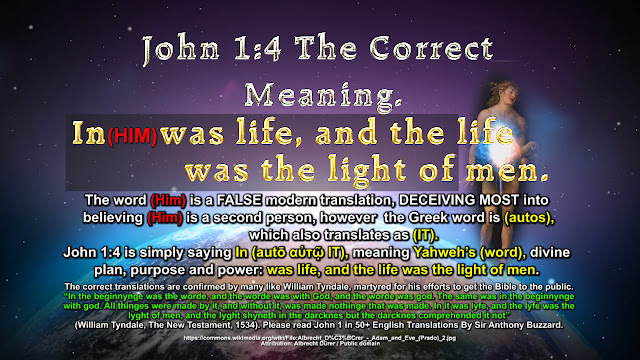

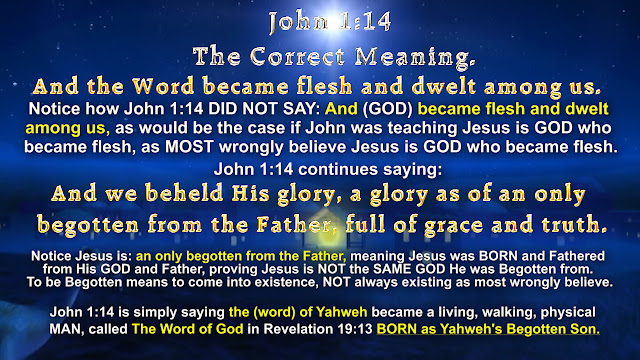
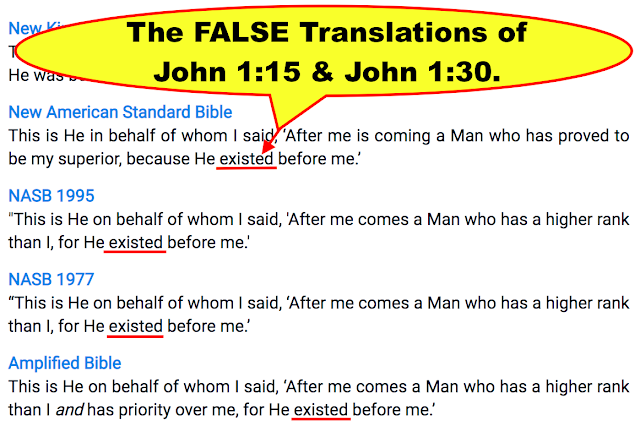

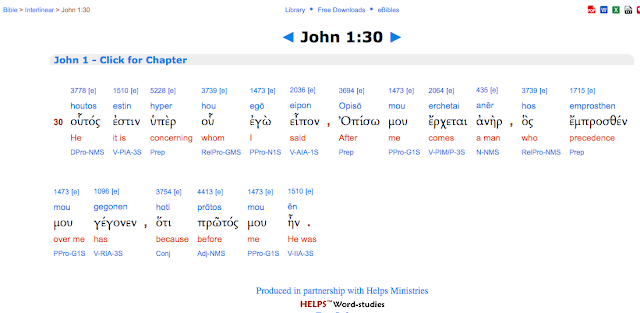





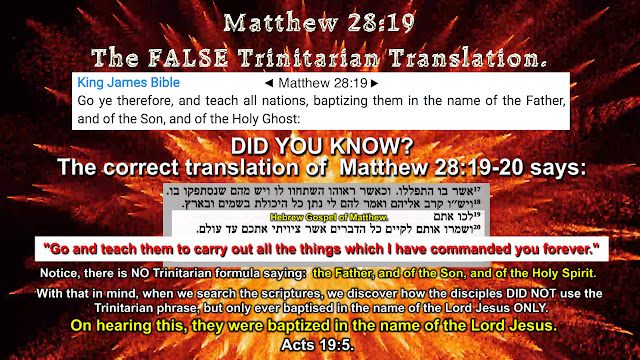
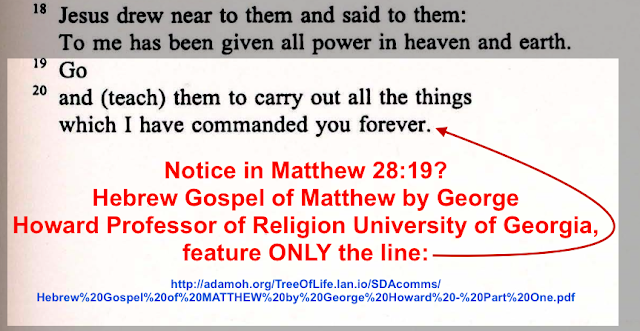



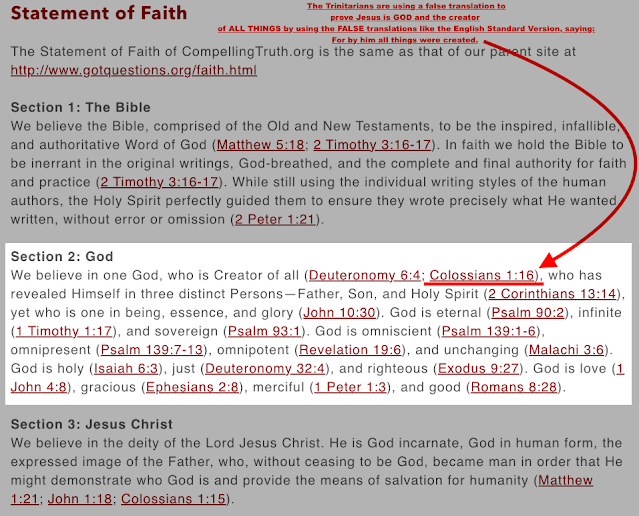



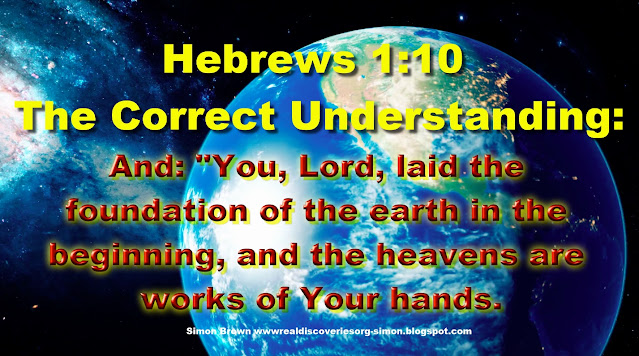
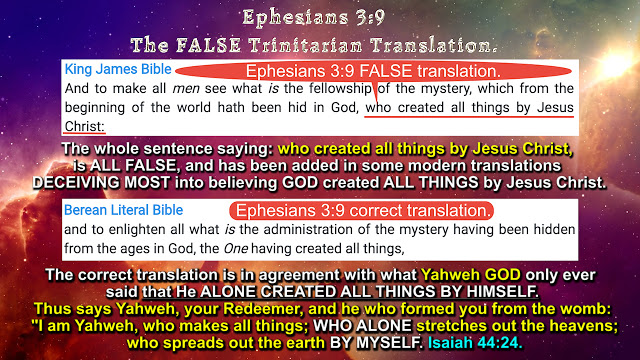

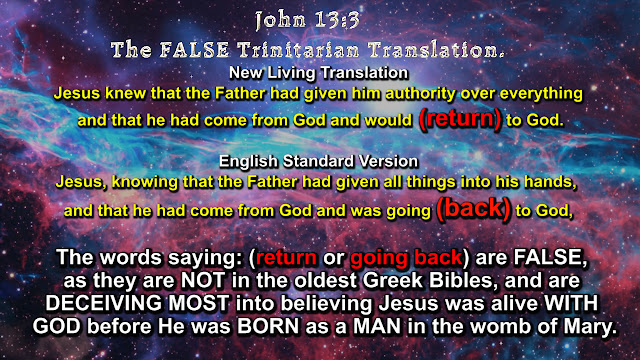





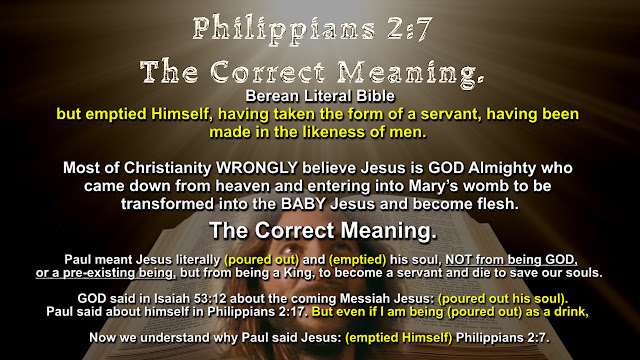
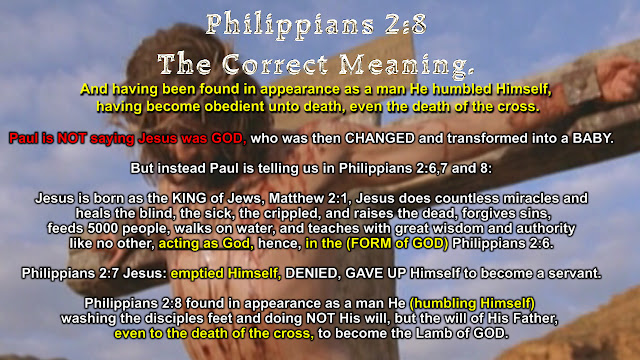

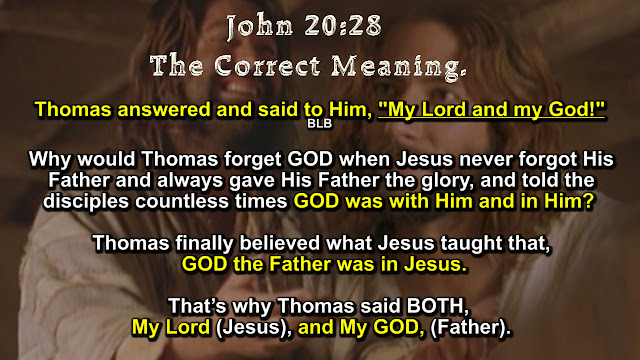
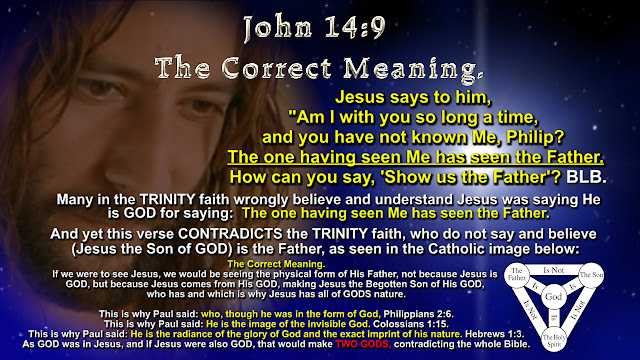

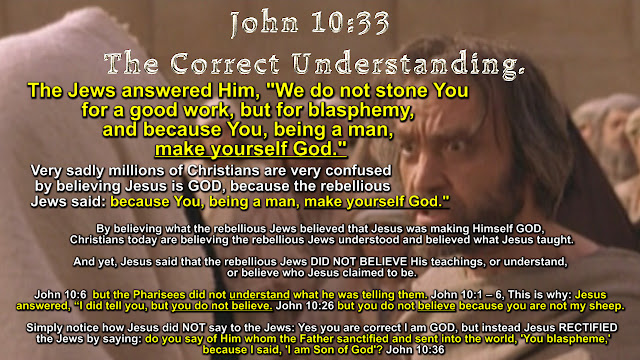
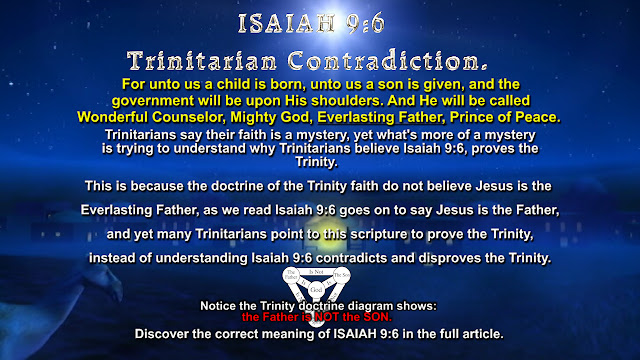




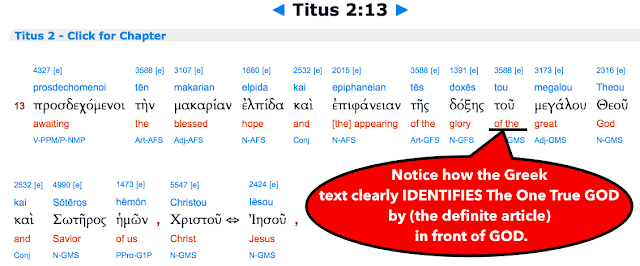











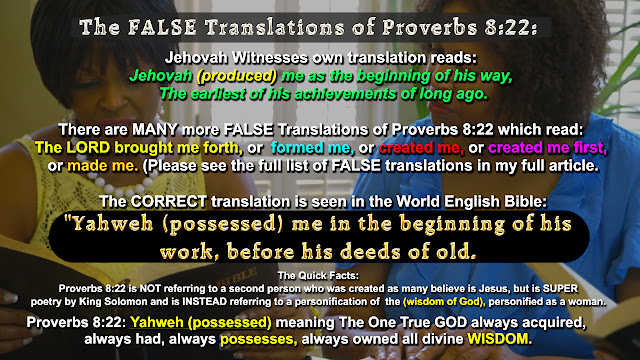

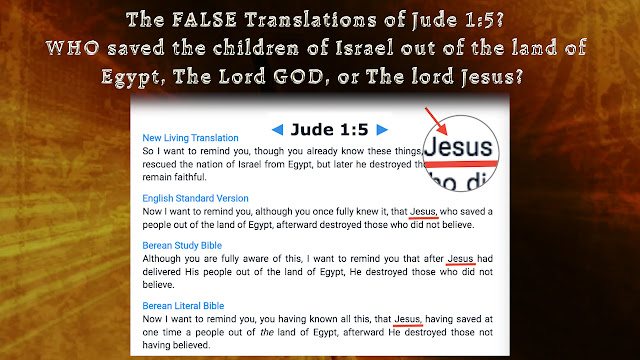

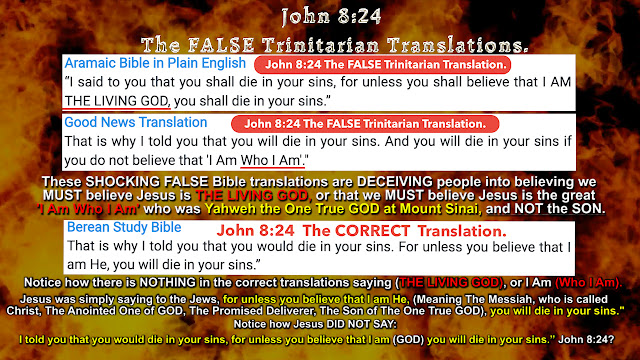
..png)
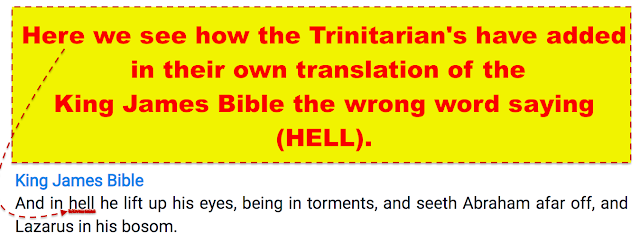
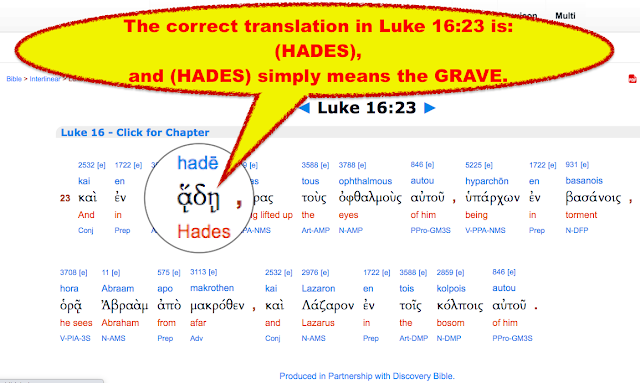


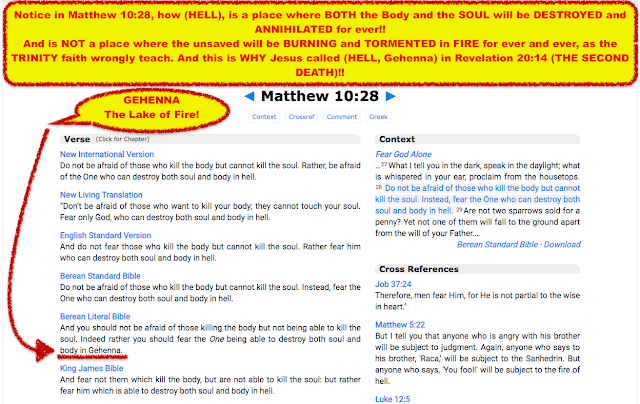


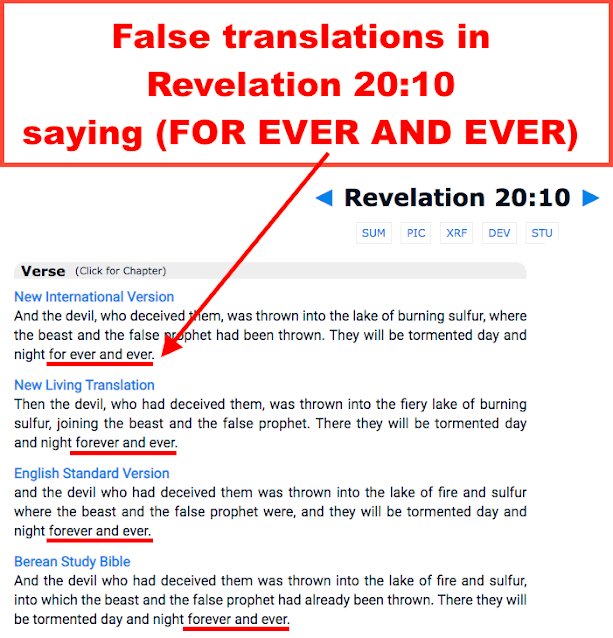




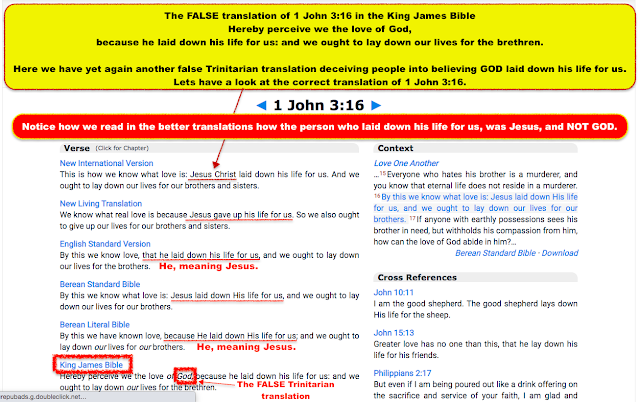


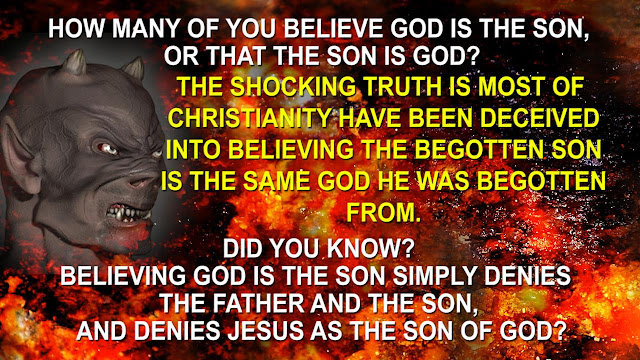

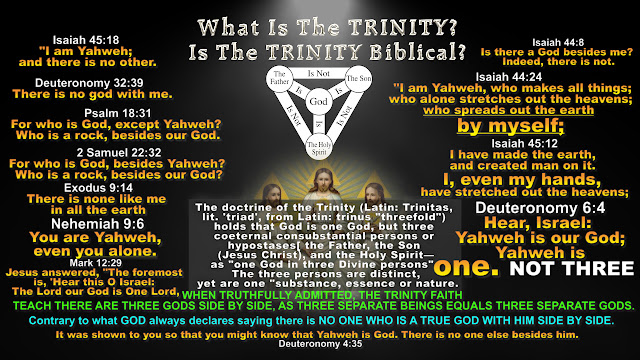
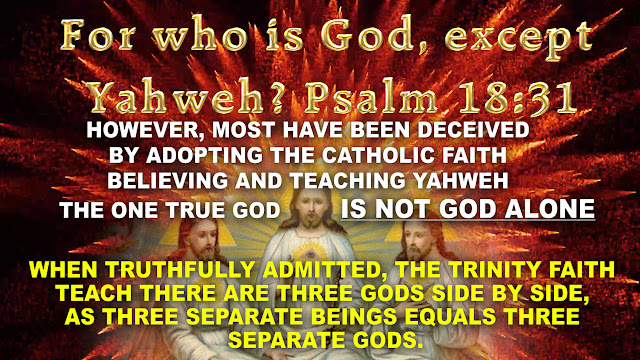







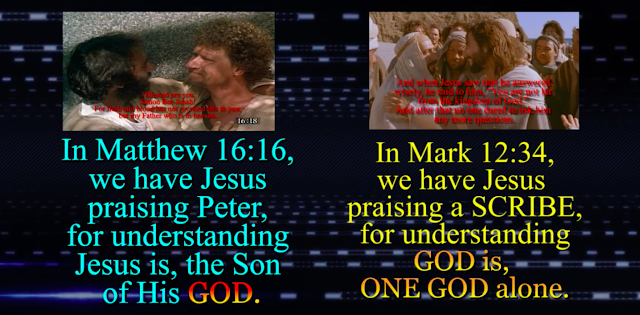

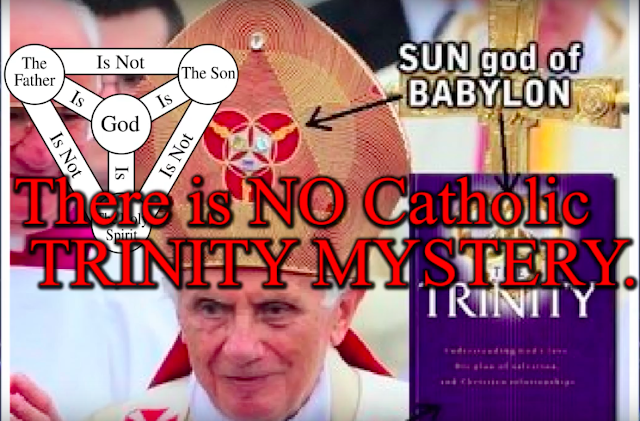



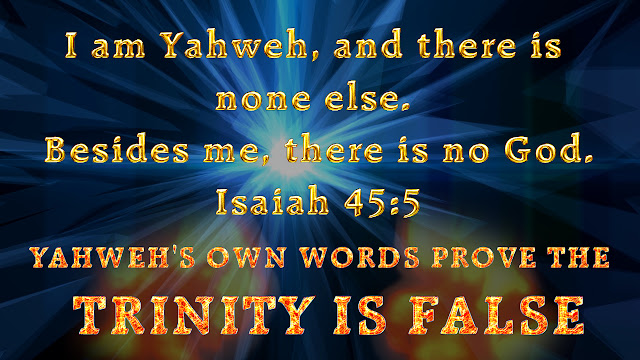
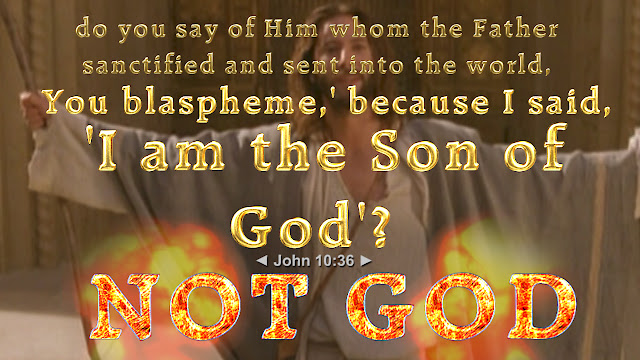


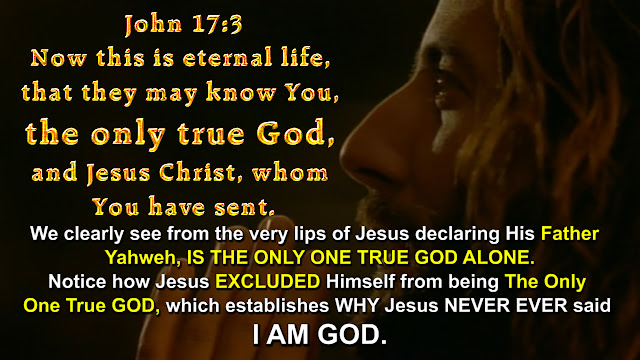
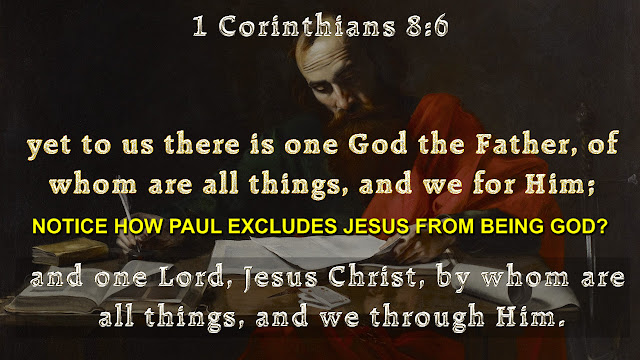

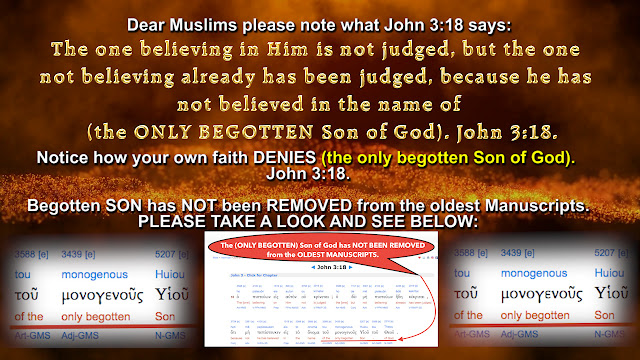
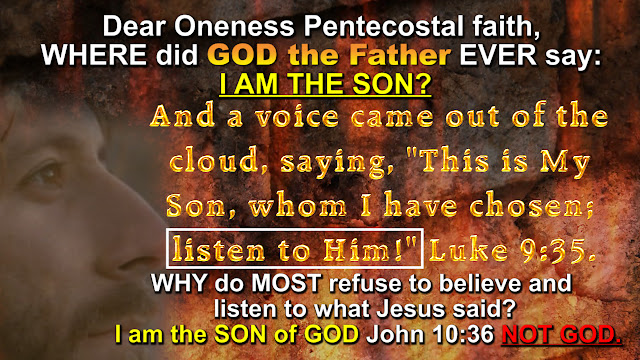


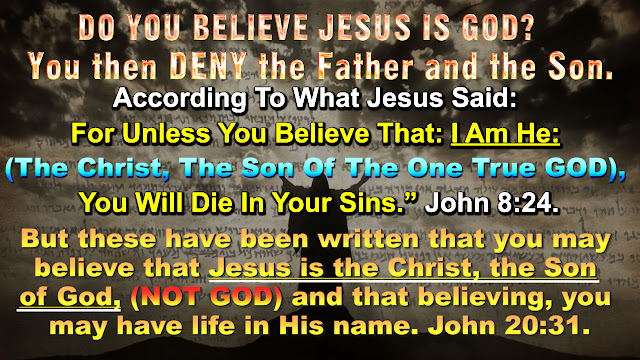
No comments:
Post a Comment